Nautical Miles Sailed
Countries Visited
Days Aboard Susie Jane
Embarking on our journey of full-time sailing with Ava and William by our side has been an extraordinary adventure, filled with valuable lessons and unforgettable moments. As we reflect on this life-changing experience, we are eager to share the wisdom we have gained along the way.
From the very beginning, we quickly discovered that adaptability and flexibility are essential skills not only for navigating the open sea but also for catering to the unique needs and routines of the kids. Meticulous planning takes on a whole new level of importance, as we consider child-friendly anchorages, weather conditions, and safety measures in every aspect of our journey.
Seamanship skills, such as navigation and sail handling, intertwine with the responsibilities of ensuring the comfort and safety of our children on board. Patience becomes a virtue as we adjust the pace of travel to accommodate the needs of our little sailors.
Living in close quarters with children has forged a deep sense of family unity, teamwork, and effective communication. Each family member learns to contribute to the smooth running of the vessel, fostering a strong bond and a shared responsibility for the adventure we are undertaking.
Embracing a simpler, more minimalistic lifestyle takes on a profound meaning when experienced through the eyes of our children. They learn to appreciate the wonders of nature, the beauty of the sea, and the joy of living in harmony with the environment.
Throughout our journey, we have discovered valuable insights, cost-cutting hacks, and sustainable practices that not only benefit our sailing lifestyle but also reduce our carbon footprint. We are excited to share these discoveries with both seasoned sailors seeking new perspectives and newbie sailors looking for guidance on their own voyages.
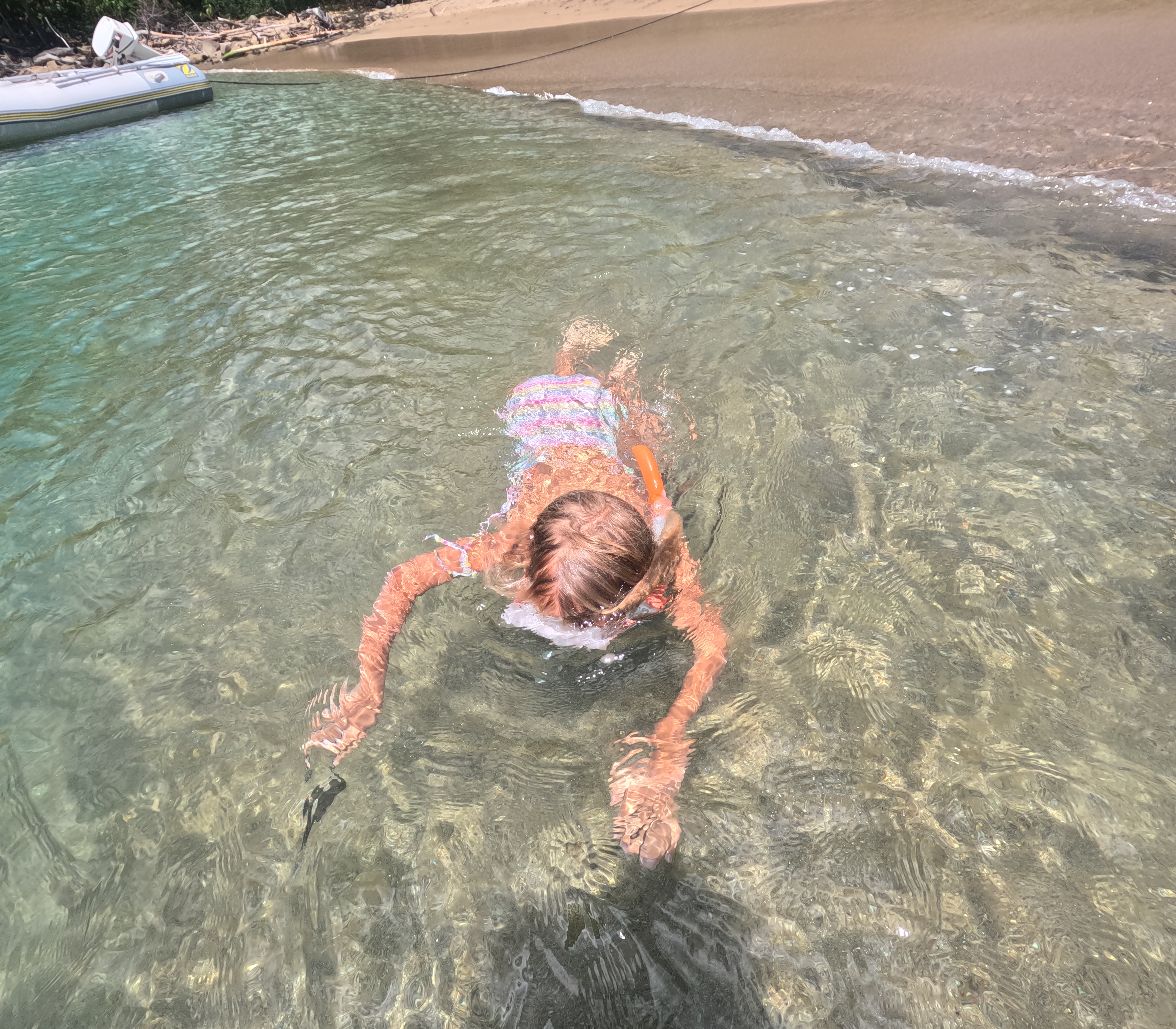
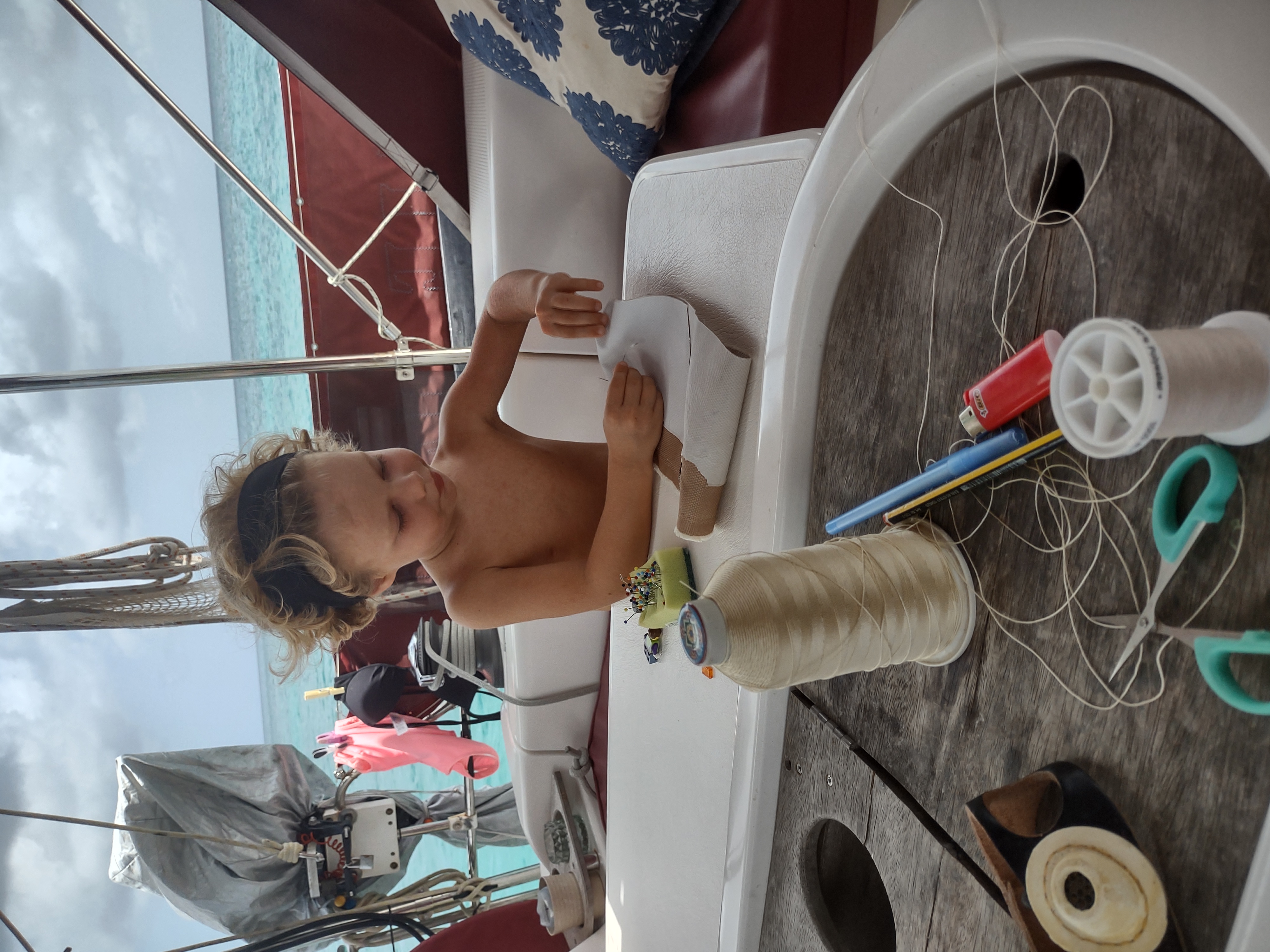
Electricity
When it comes to generating the necessary electricity to power Susie Jane, there are several reliable options to consider. Wind power through a wind generator, utilising the inboard motor, employing a generator, and harnessing the abundant solar energy, especially as you sail further south.
In our case, we have invested in a solar setup with a robust capacity of 1300 W (official rating 1800w, but we do not reach that thanks to our flexible panels). Our arrangement includes two large and one mid-sized Q-Cells panels, complemented by a mid-sized Victron panel and two flexible panels strategically positioned throughout our cockpit area and on our davits. This setup has served us well, but we encountered an issue with our batteries that became evident during our Atlantic crossing. Running the autopilot 24/7 (except when using the Hydrovane) highlighted the limitations of our batteries. We often found ourselves eagerly awaiting the first light of day to recharge our depleted batteries.
The prospect of investing in lithium batteries initially seemed daunting due to the associated costs. However, after careful consideration, we took the leap in Guadeloupe (Caribbean) and installed the lithium battery bank we had long desired. Let me tell you, it was a game-changer. While the capacity of lithium batteries may not differ significantly from lead-acid options, their performance exceeded our expectations. We can now comfortably discharge the batteries to a lower level, no longer needing to worry about staying above the 50% mark as we did with lead-acid batteries. Our evenings are filled with ample light, allowing us to enjoy movies after dinner and indulge in the simple pleasures of light without hesitation. We can easily boil water for tea, and when we wake up the next morning, we are reassured that we still have enough electricity to power the boat for another day or two.
We had to pay special attention to the safety of our electrical system while changing over so many components. Sander spent days researching best practices and more days changing the old clunky setup with stronger fuses and thicker wiring. In addition, we have a shunt to monitor the power levels. We use an old tablet mounted above the chart table to view our energy consumption and current.
Every morning, we move our boom to either port or starboard side to ensure optimal solar utilisation and minimising shading on the panels. On cloudy days we avoid drawing the batteries further that 50% for the day. Of course, with lithium you are able to draw them down to 0%, but we are never certain of the upcoming weather and thus try not to take too many chances.
In conclusion, as you consider the various aspects of equipping your sailboat, don’t overlook the importance of a robust electrical system, including the installation of lithium batteries. This investment will enhance your onboard comfort and eliminate unnecessary worries.
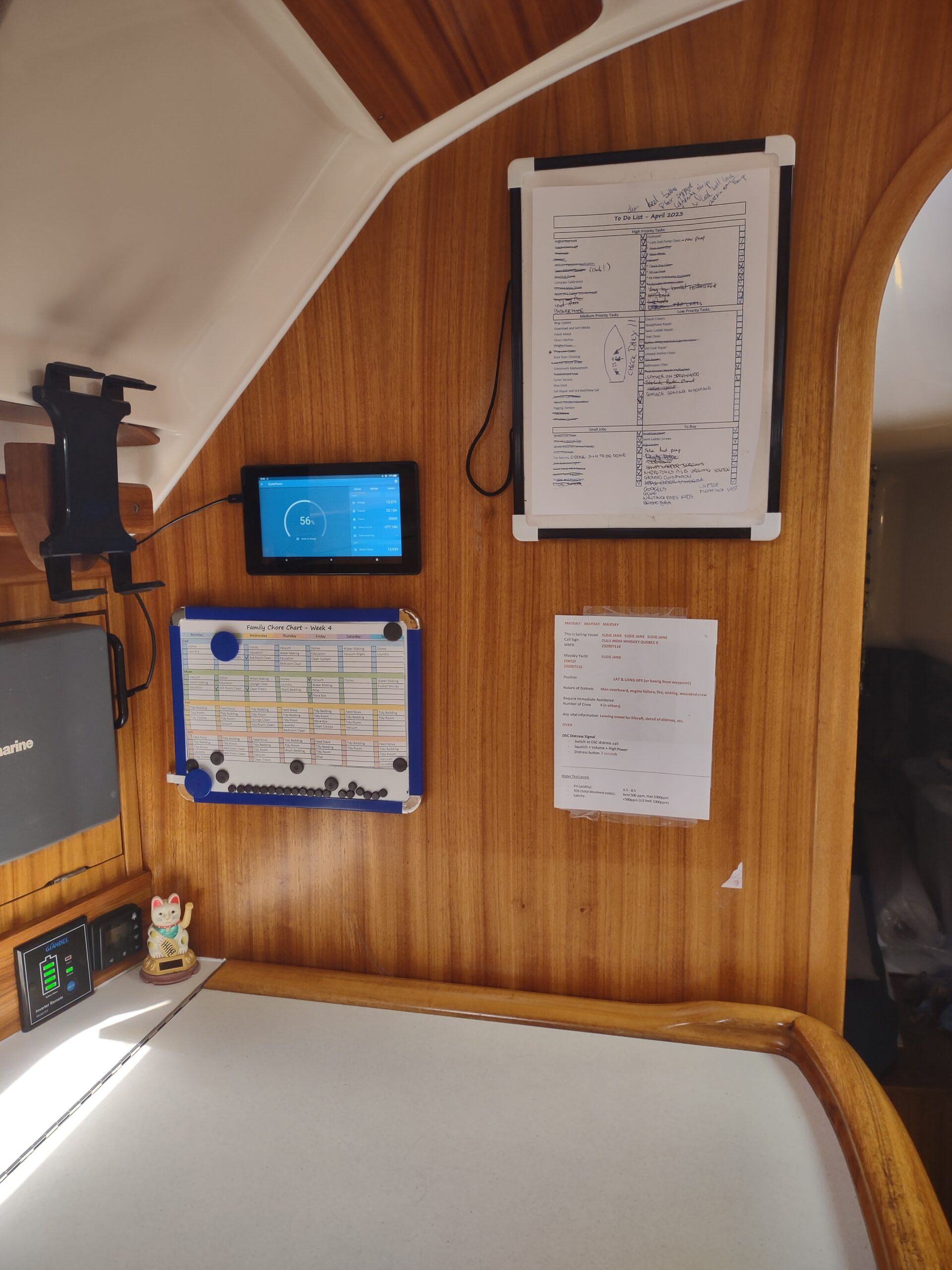
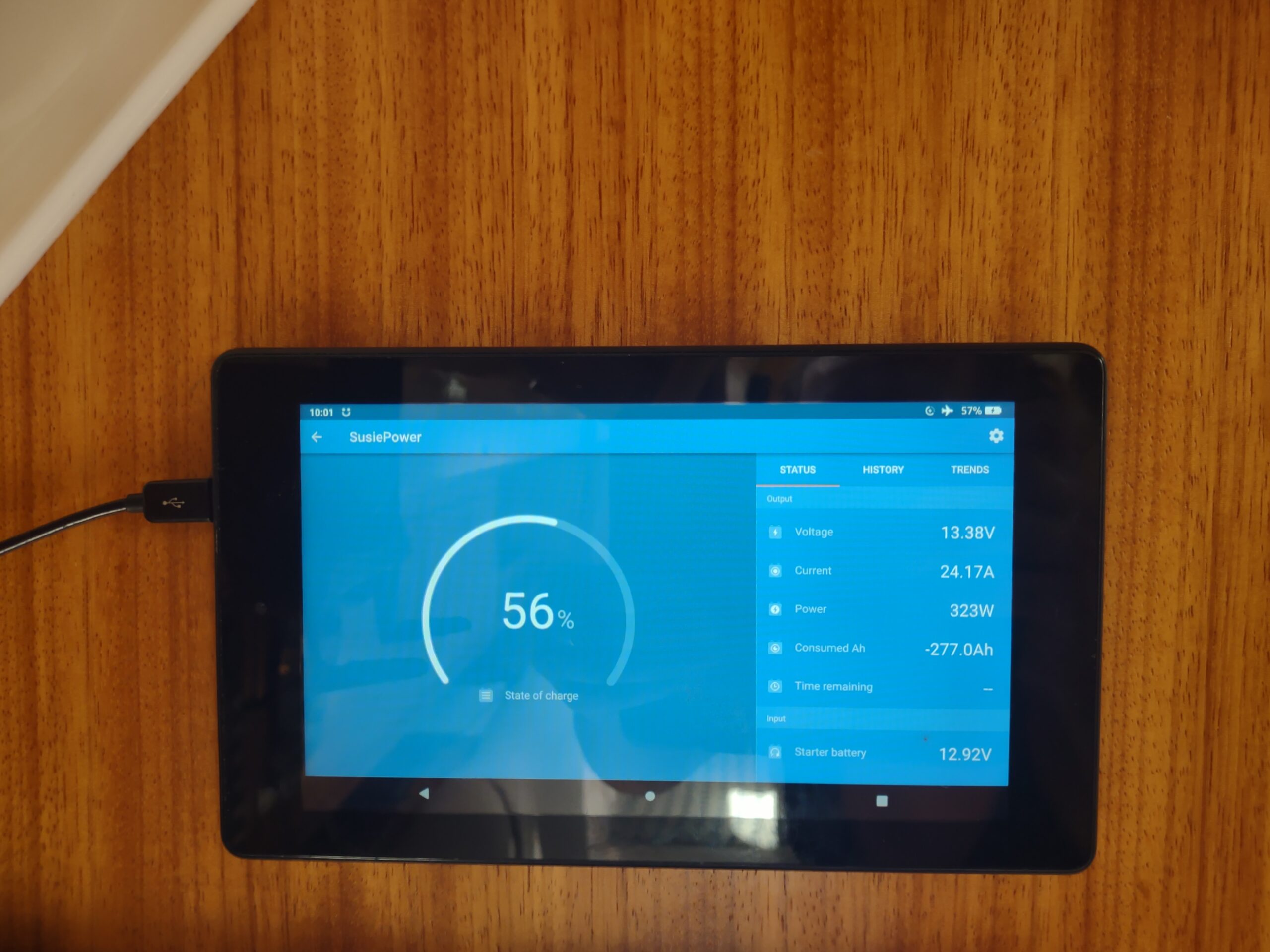
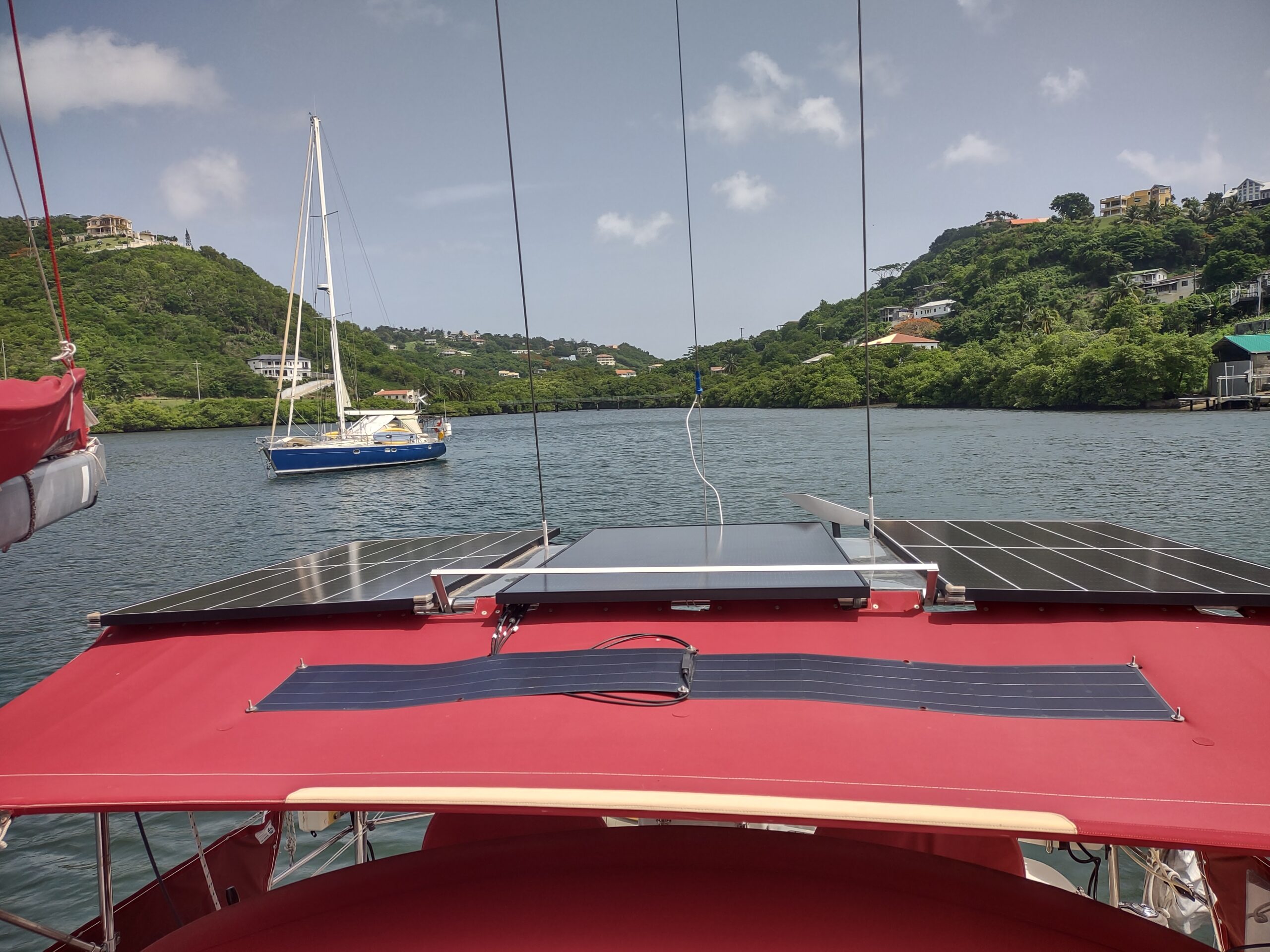
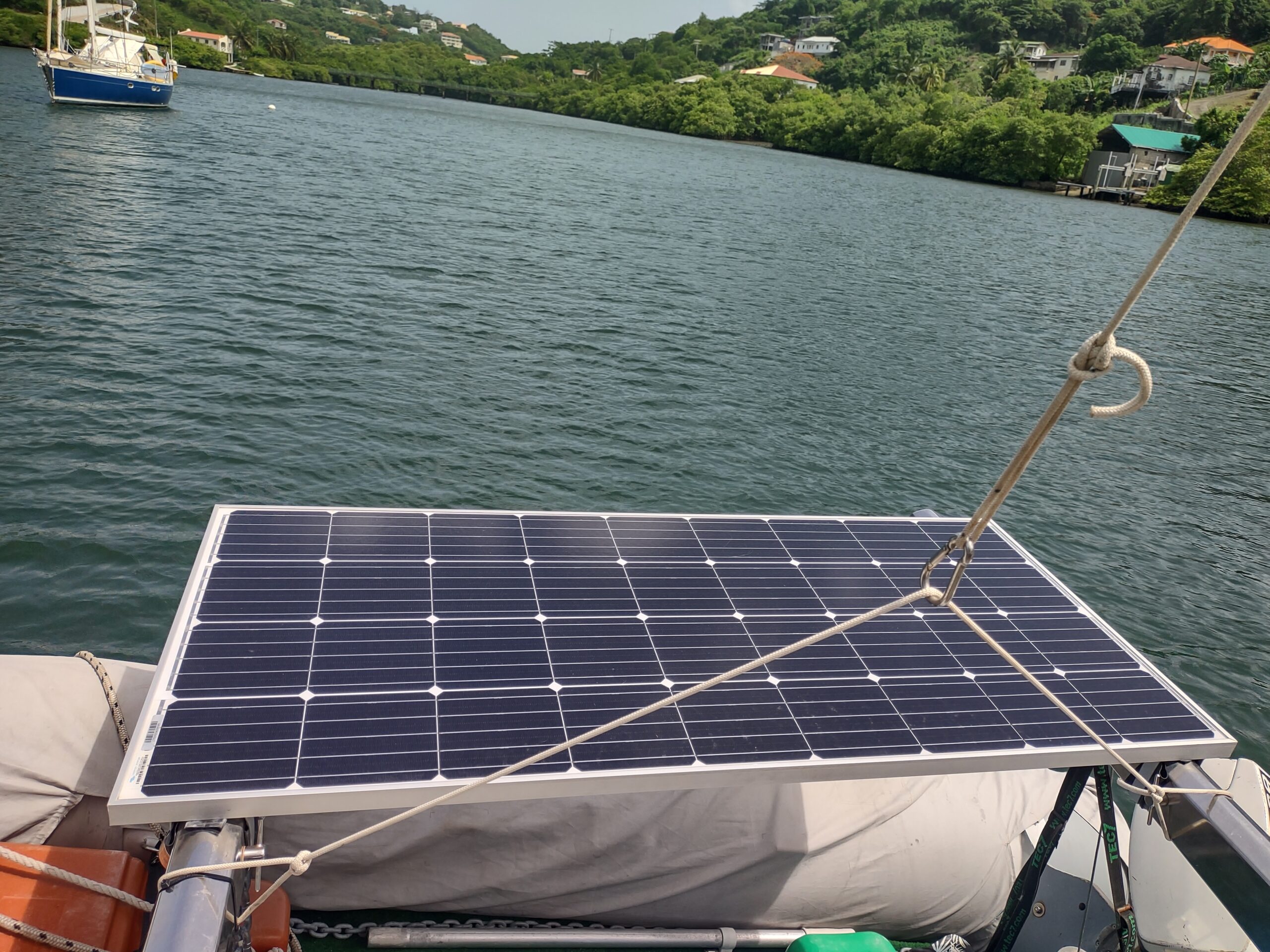
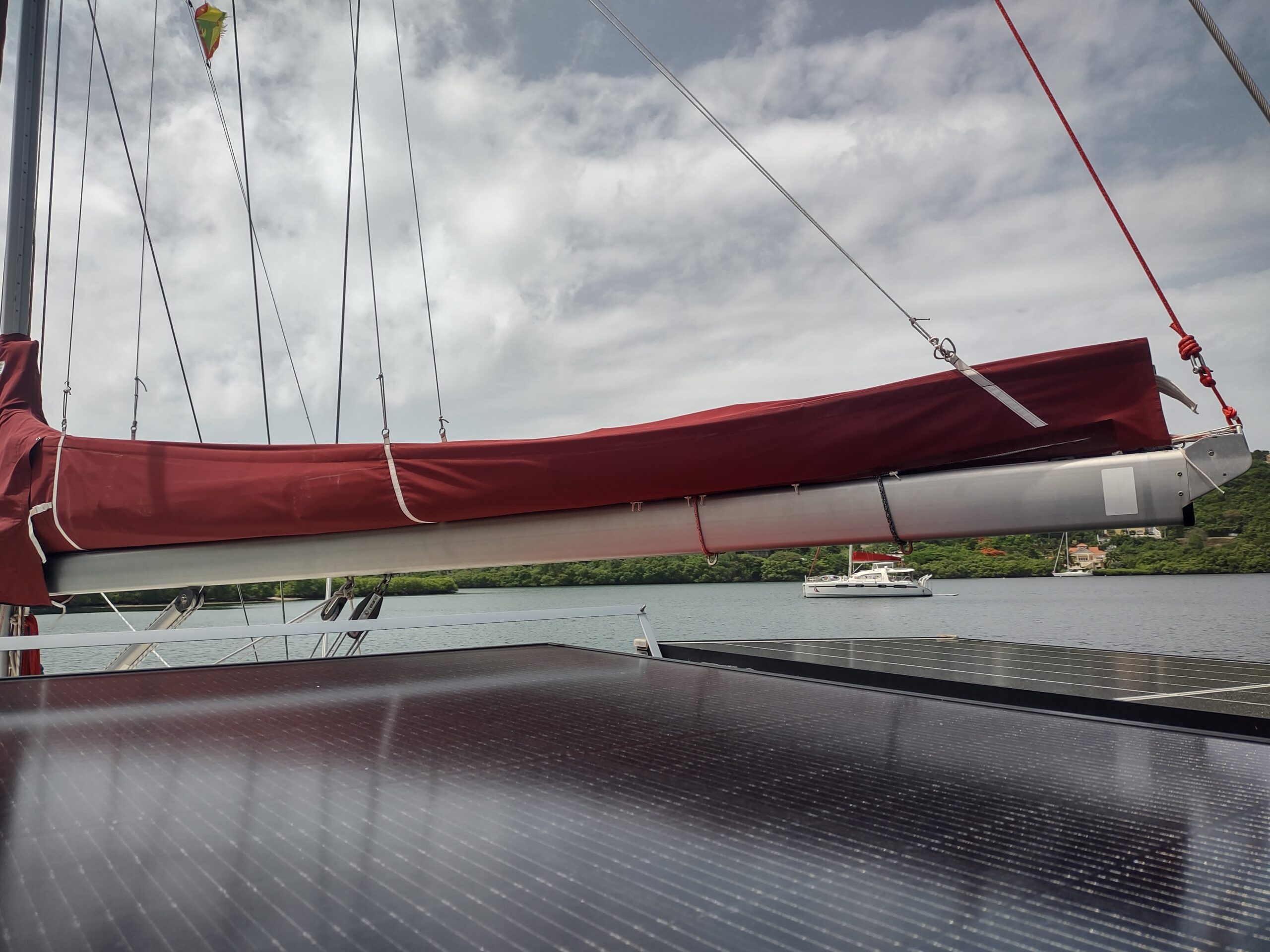
Gas vs. Electric
To enhance our onboard capabilities and reduce our reliance on external resources, we made a significant upgrade in our cooking system, transitioning from gas to induction and electric-only appliances. This decision was driven by the additional capacity of our electrical system, which allowed us to explore more efficient and sustainable options.
Our choice was a Westinghouse electrical oven, carefully selected to seamlessly fit into the space previously occupied by the gas cooker. To optimise the available surface area, we repurposed the top of the old gas unit to accommodate two Vango induction plates. The result? A fully fitted electrical unit that meets our cooking needs perfectly.
This transformation not only streamlines our cooking process but also significantly reduces our reliance on land-based resources. No longer do we need to make frequent trips ashore to refill gas bottles, eliminating the hassle and time-consuming nature of this task. Additionally, concerns about carbon monoxide poisoning associated with gas usage are now a thing of the past, providing us with peace of mind and a safer cooking environment onboard.
By embracing this change and embracing the benefits of an electrical cooking system, we have taken another step towards self-sufficiency and sustainability while enhancing our overall onboard experience.
On a side note, we’ve fully embraced the prepper lifestyle, and thus need to have a backup for everything! As such, we have an outdoor portable gas stove that connects to a gas bottle we kept (just in case). It is a true marvel in it’s simplicity and ensures we are able to cook when our batteries are depleted.
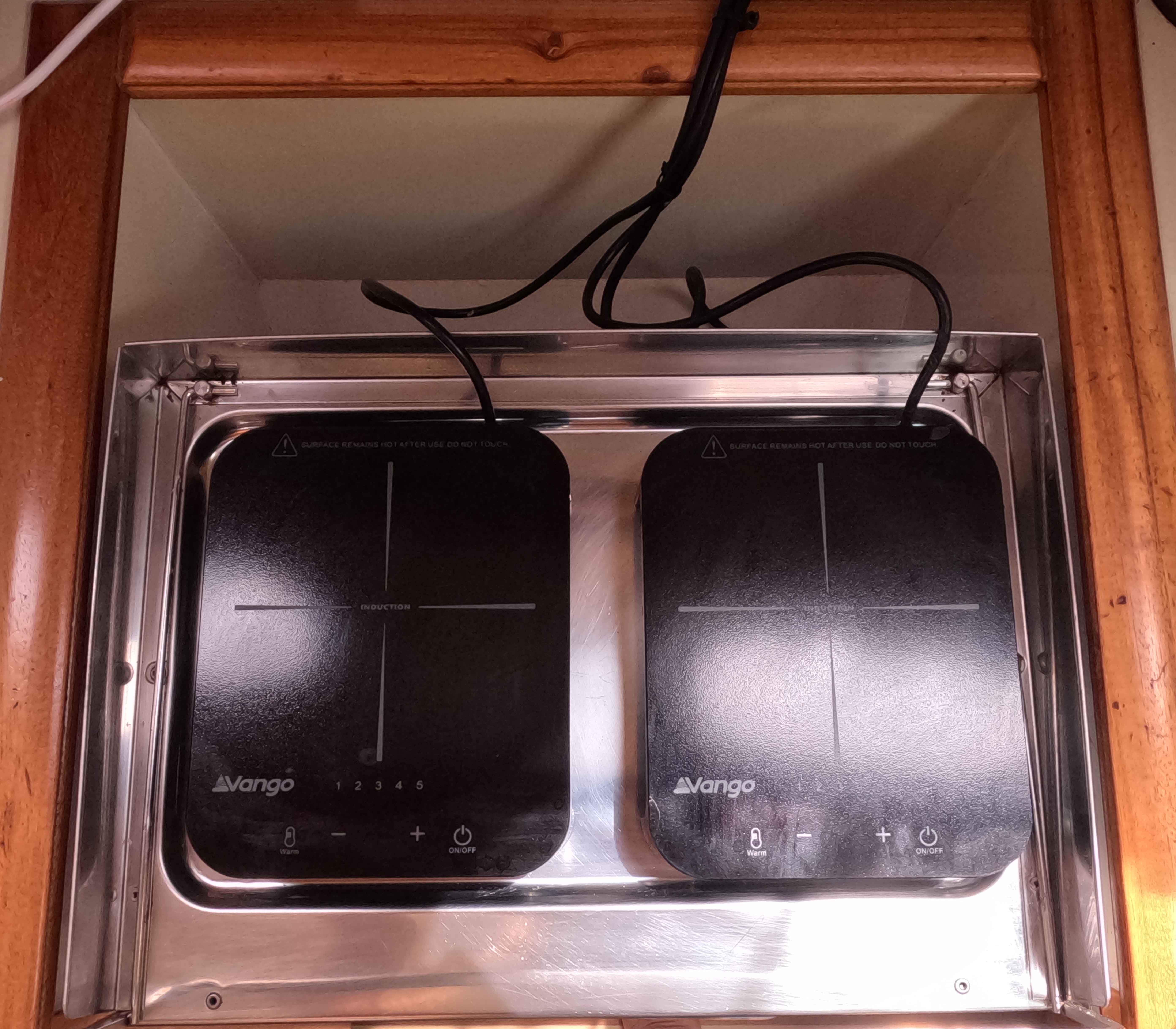
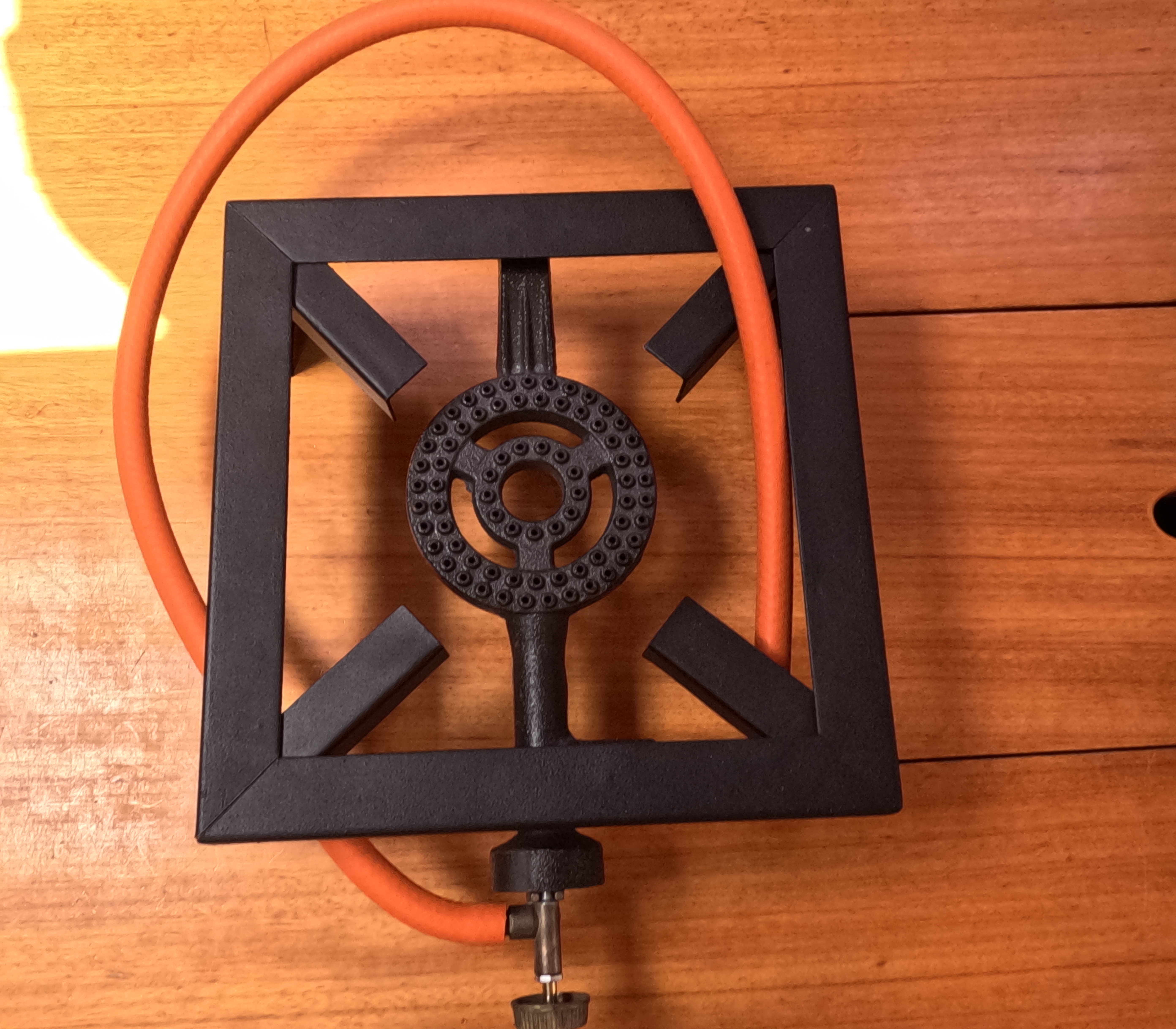
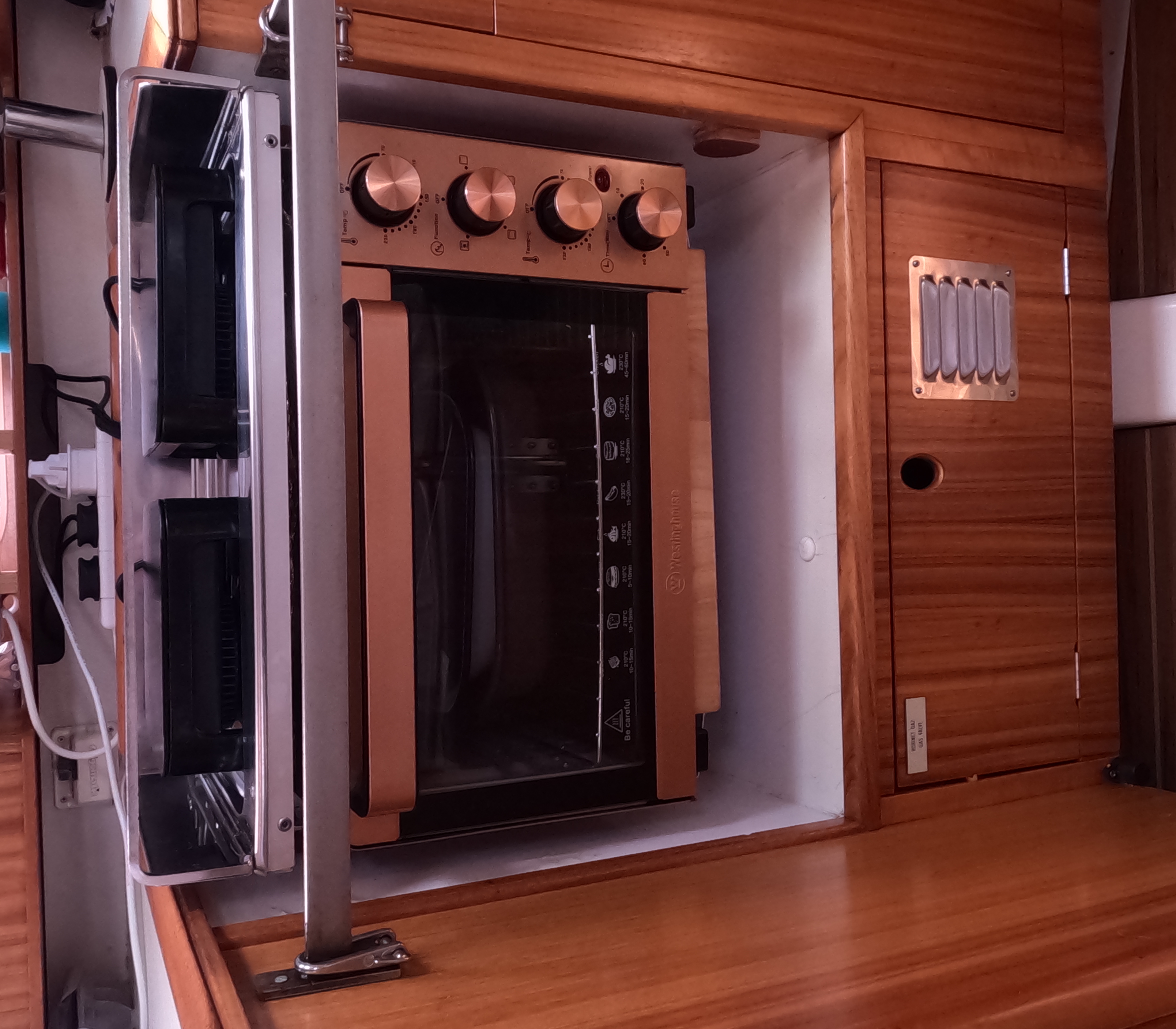
Internet
Previously, we relied on mobile plans and purchasing multiple SIM cards to meet our internet needs. However, we made the decision to invest in Starlink Mobility and it has completely transformed our sailing experience. The benefits are remarkable. Starlink ensures connectivity regardless of how remote or offshore your location may be and global coverage ensures swift and efficient communication of distress signals or requests for assistance. You can research and plan routes, access information about local attractions, and connect with fellow sailors for valuable insights and experiences.
Mounting was the biggest hurdle. The first consideration is to avid having any obstructions that would block a clear view of the sky in the direction of the Starlink satellites. On a sailboat, this can become tricky with booms, sails, the mast and our solar arch. Second consideration was the mounting material itself. We were in Les Saintes, Guadeloupe when experimenting with various fittings. As such we were limited to the materials we had aboard and items from a tiny DIY store. The metals need to be strong enough to hold the dish and resist the windage we would have while sailing. Sander removed the base and built a stainless steel mount attached to the pushpit and solar frame on our stern. While sailing back to the main island of Guadeloupe, we encountered an unexpected squall that reached gusting speeds of over 50 knots. The perfect conditions to test our setup. The mount and dish wobbled a tad, but otherwise, remained in place and has since called this spot home.
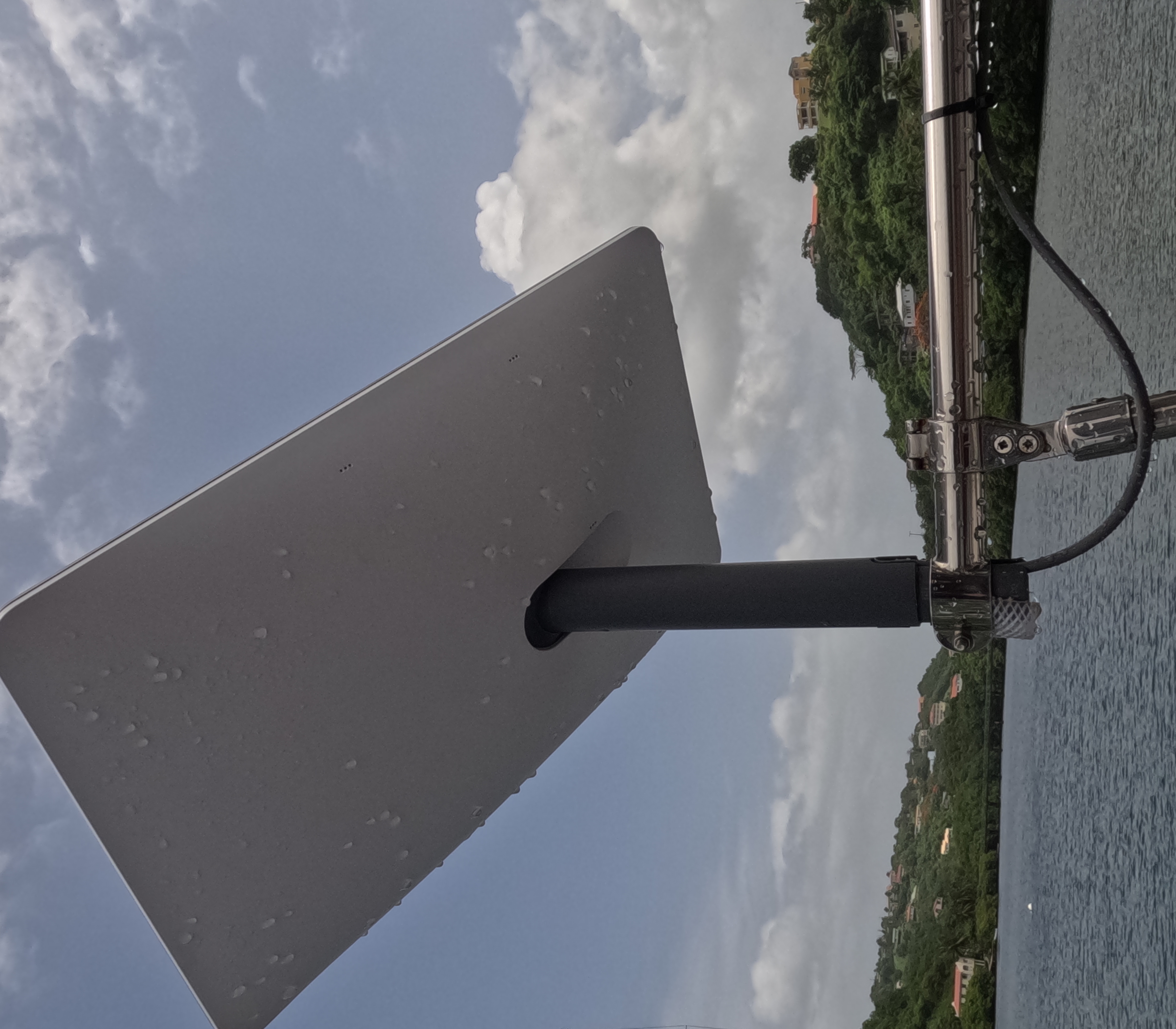
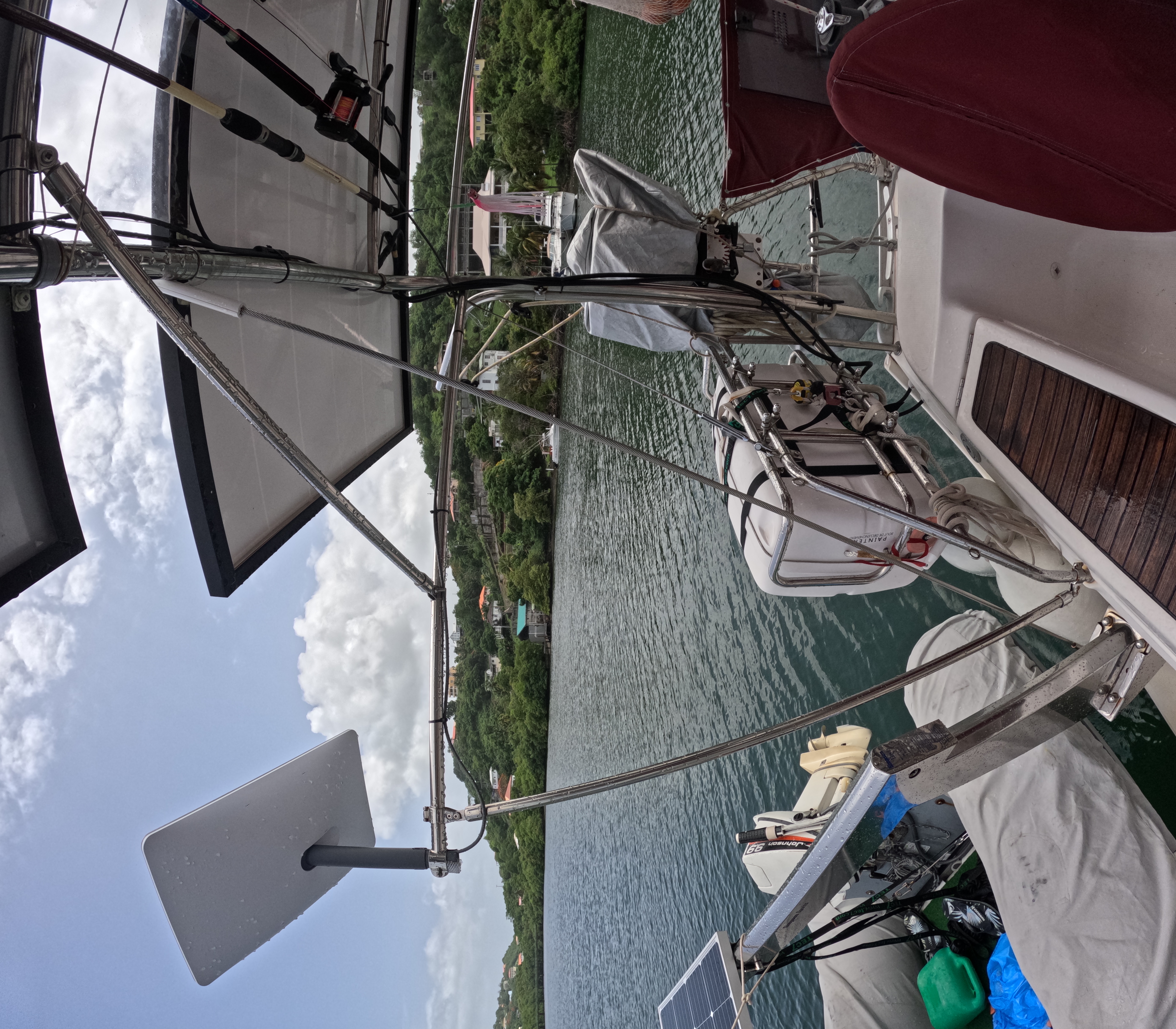
Dingy
Investing in a powerful outboard engine and a hard-shelled dinghy is an absolute must for any serious sailor. When we initially purchased a 2.5 hp outboard and a small 2.4-meter dinghy in Brighton, UK, we thought it would suffice for our needs. However, it wasn’t until a fellow sailor captured a picture of us in our tiny dinghy that we realised how quickly we would outgrow it.
Not only did we struggle to fit comfortably, but navigating through rolling waves became a daunting task. Now that we find ourselves in the Caribbean, where anchorages are a 5 to 20-minute dinghy ride away, the importance of upgrading to a 10+ HP engine is crystal clear. Our trusty Johnson 9.9 HP from the 80s has proven its durability by surviving two drownings and still running like a champ. However, we yearn for even more power.
Furthermore, we now understand the significance of a hard bottom dinghy. It’s not just about avoiding coral scrapes; it’s about preventing waves from spraying into the dinghy and allowing for smoother movement. Therefore, if you want to navigate the waters effortlessly and comfortably, splurging on a powerful outboard engine and a hard-shelled dinghy is an investment you won’t regret.
Education
Before embarking on our sailing adventure, we took the initiative to consult with the local council regarding our plan to home-school our children. While they provided us with a plethora of online resources, we discovered that most of them were not curriculum-based and merely served as supplementary materials. Determined to provide our children with a well-rounded education, we took matters into our own hands and invested in a vast collection of workbooks spanning the next five years.
However, this laid-back approach, although initially appealing, turned out to be more frustrating than effective. Seeking a more structured and comprehensive solution, we stumbled upon Easy Peasy All-In-One Homeschool, an exceptional online home-school platform. The platform offers education from year 1 to 12, following the K12 schooling system, and the best part is that it is entirely free, but welcome donations.
Each day, Easy Peasy provides a fresh set of activities tailored to the subjects we have chosen, ensuring a well-rounded education for our children. Currently, Ava is excelling in year 2, covering Math, Reading, Language, History, Biology, Thinking, Computer, and Health. William, on the other hand, is completing year 0. Both of our children are proficient readers and possess a knack for mathematics.
An added bonus of this platform is that Sander and I also have the opportunity to refresh our knowledge on various subjects, such as cell structure and the fascinating history of Genghis Khan. With Easy Peasy, we can easily share the responsibility of educating our children, as it provides a clear roadmap and allows the other parent to seamlessly step in and assist with the assigned tasks. This structured approach to home-schooling has proven to be incredibly effective and has brought peace of mind to both Sander and me, knowing that Ava and Will are receiving a high-quality education while we embark on our sailing journey.
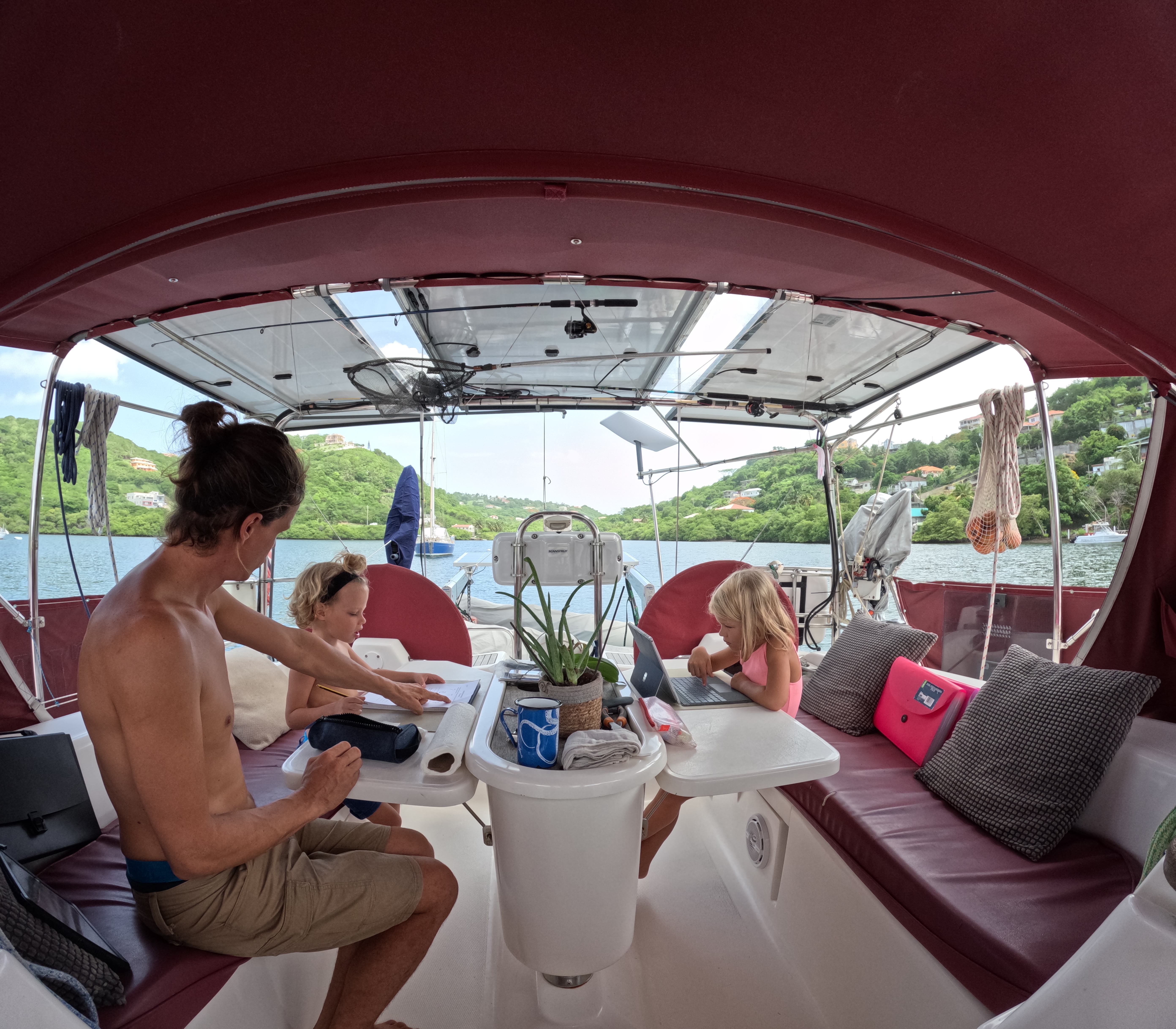
Water
A watermaker is not just a luxury, but an absolute necessity in our eyes. While there is an initial cost involved, the convenience and comfort it provides in the long run are invaluable. After careful consideration, we chose the Schenker Zen 30, which came at a price of 4600 Euros. The retail is price is usually 5500, but we struck a discount as we were buying our unit and a second for Sander’s parents boat. This remarkable system delivers a generous 30 liters of fresh water per hour, ensuring our water needs are met. By simply connecting a hose from the watermaker to our individual water tanks, we have a constant and reliable water supply at our fingertips.
Of course, it’s important to note that regular maintenance is required. The straining filter needs to be cleaned approximately every five days to ensure optimal performance. Additionally, we have enhanced our setup by adding an extra 20-micron filter to the existing filter setup, further enhancing the quality of our water supply.
It would be wise to invest in a battery operated water tester to ensure your water is safe for drinking. We worked with the following units to achieve this:
PH between 6.5 – 8.5
TDS (total dissolved solids) are no higher than 1000ppm and ideally 500ppm
Salinity is less than or equal to 500ppm.
We found that running our watermaker for about 5 minutes, the ideal levels would be reached. We would have a taste and smell and then run the water into the water tanks.
Just imagine the alternative if we didn’t have a watermaker onboard. We would be entirely dependent on either collecting rainwater or transporting containers to shore in search of freshwater sources. Not only would this be time-consuming and inconvenient, but it would also limit our freedom to explore remote destinations.
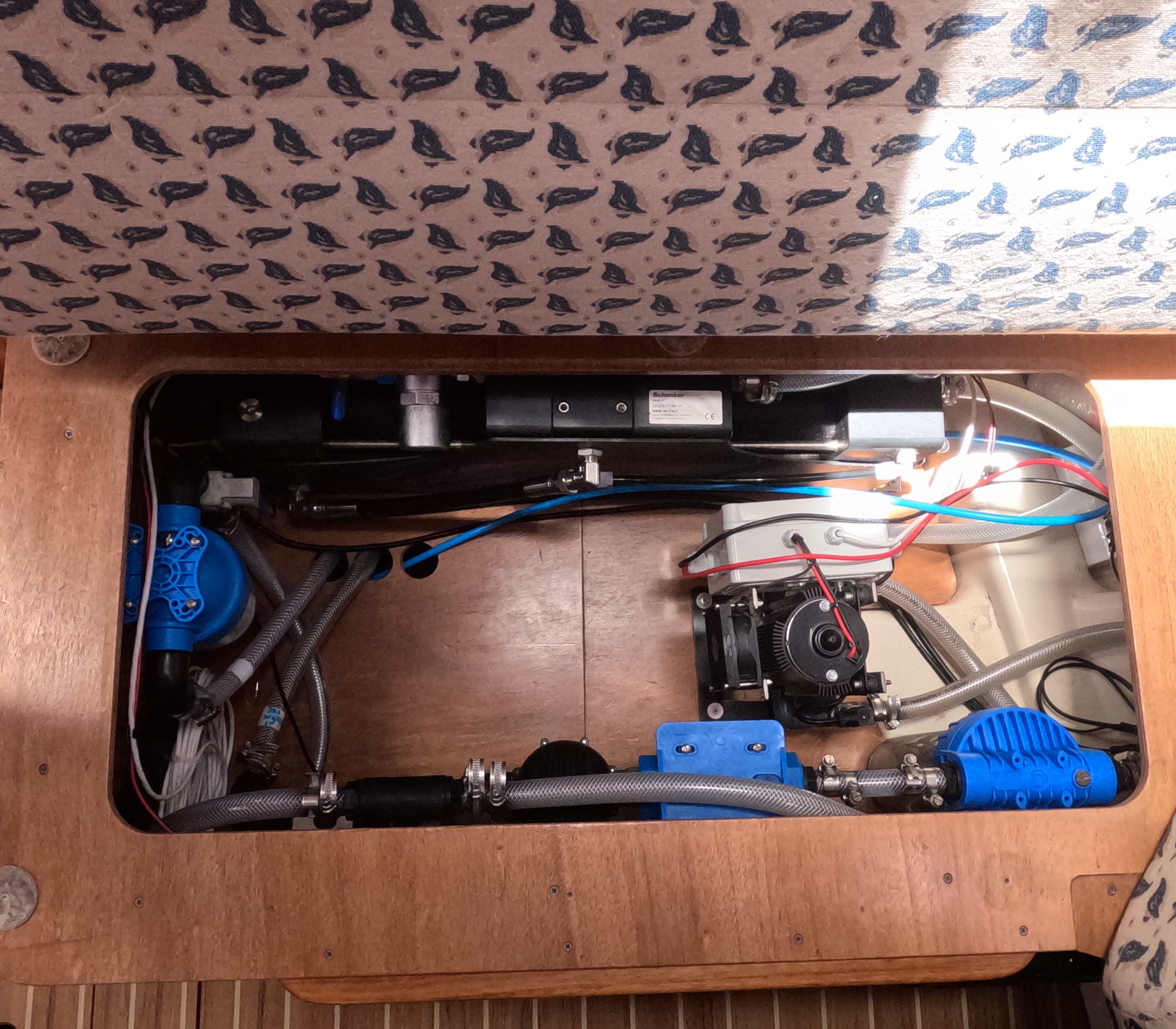
Washing Machine
A washing machine onboard is not just a must-have, but a time saver too.
Initially, I was convinced that I could handle all our laundry by hand, embracing the romanticised notion of a carefree, bohemian lifestyle portrayed on social media. The first time, it seemed novel and adventurous, using my knuckles to vigorously scrub out stubborn stains that little children seem to collect effortlessly. I proudly displayed my handywork, seeking the approval of fellow sailors. However, within a mere hour, another pile of dirty laundry would magically appear, leaving me overwhelmed. The novelty quickly wore off, along with the skin on my knuckles.
Realising the impracticality of handwashing, we embarked on a quest to find the perfect washing machine for the limited space available on our beloved Susie Jane. We sought the smallest top-loading washing machine that could handle more than a mere three socks and a t-shirt. Our solution came in the form of the Kuppet 4.5kg washing machine, which now runs at least three times a week, efficiently tackling our laundry needs.
It is important to note that using the washing machine consumes a significant amount of water. Each wash requires approximately 60 to 100 litres of water. Therefore, investing in a watermaker becomes an essential requirement if you choose to purchase a washing machine. This way, you can ensure a continuous and sustainable supply of water to meet your laundry needs without compromising your cruising experience.
On a side note, we noticed that the conventional washing pods tend to clog the drainage hose that run into the automatic bilge. We tried out an all natural washing powder solution in the form of an EcoEgg. At first it did a brilliant job, but after about the 10th wash we noticed that stains were not being removed and our clothes did not come out smelling fresh. For this reason we reverted back to the conventional pods and Sander blowing and sucking to unblock the hose every so often. It could be that EcoEgg have upped their game, so worth having another look at their newer pods since the ones we purchased were from 2019.
Our Kuppet has been running for a couple years now and we have not had much issue albeit the occasional clogging a couple months back. All and all, I am a happier person knowing that I am not the sole stain remover on the boat.
For our bigger laundry needs like the four sheets, duvet covers and pillow cases we either spend a couple days making water to facilitate the 7 individual washing cycles, or take it to a local laundromat. We have a 50kg folding cart to assist us with moving around large loads of washing or shopping when on land.
When it comes to drying, we use the guard rail to air dry items and have invested in stronger pegs to ensure we do not loose our clothing with a strong gust of wind. In the Caribbean however, these pegs are starting to shatter due to UV damage and we need to replace them every so often.
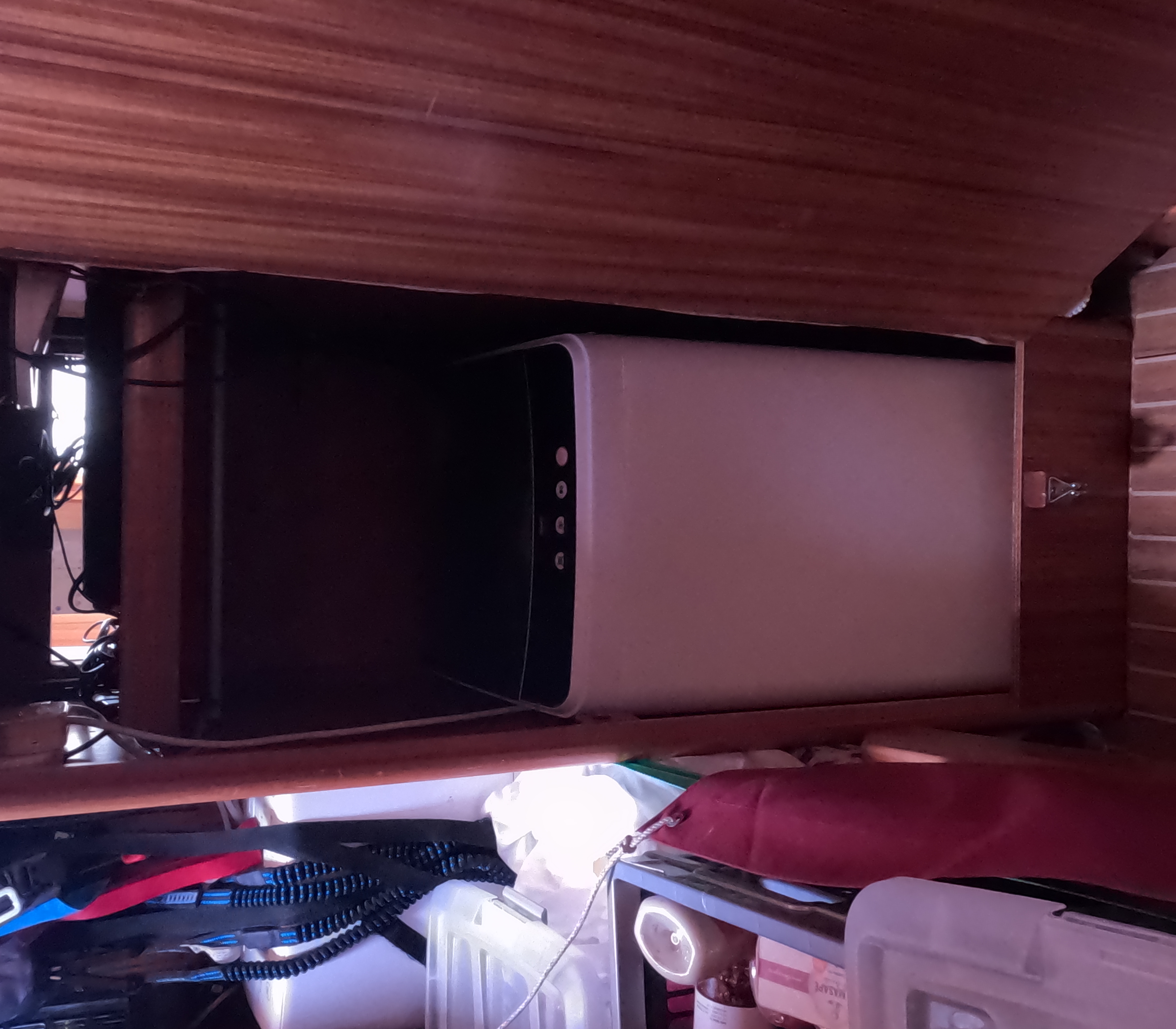
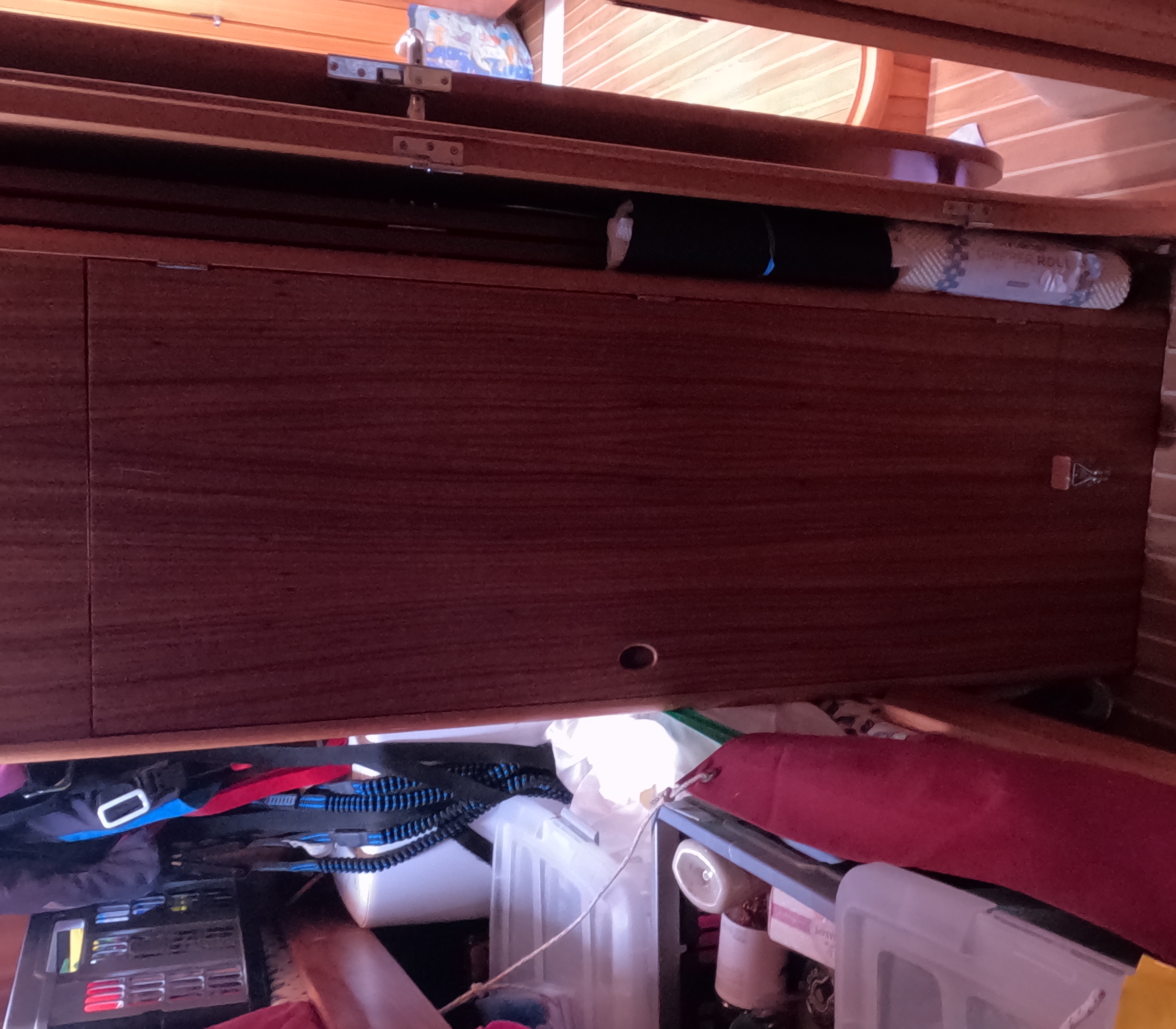
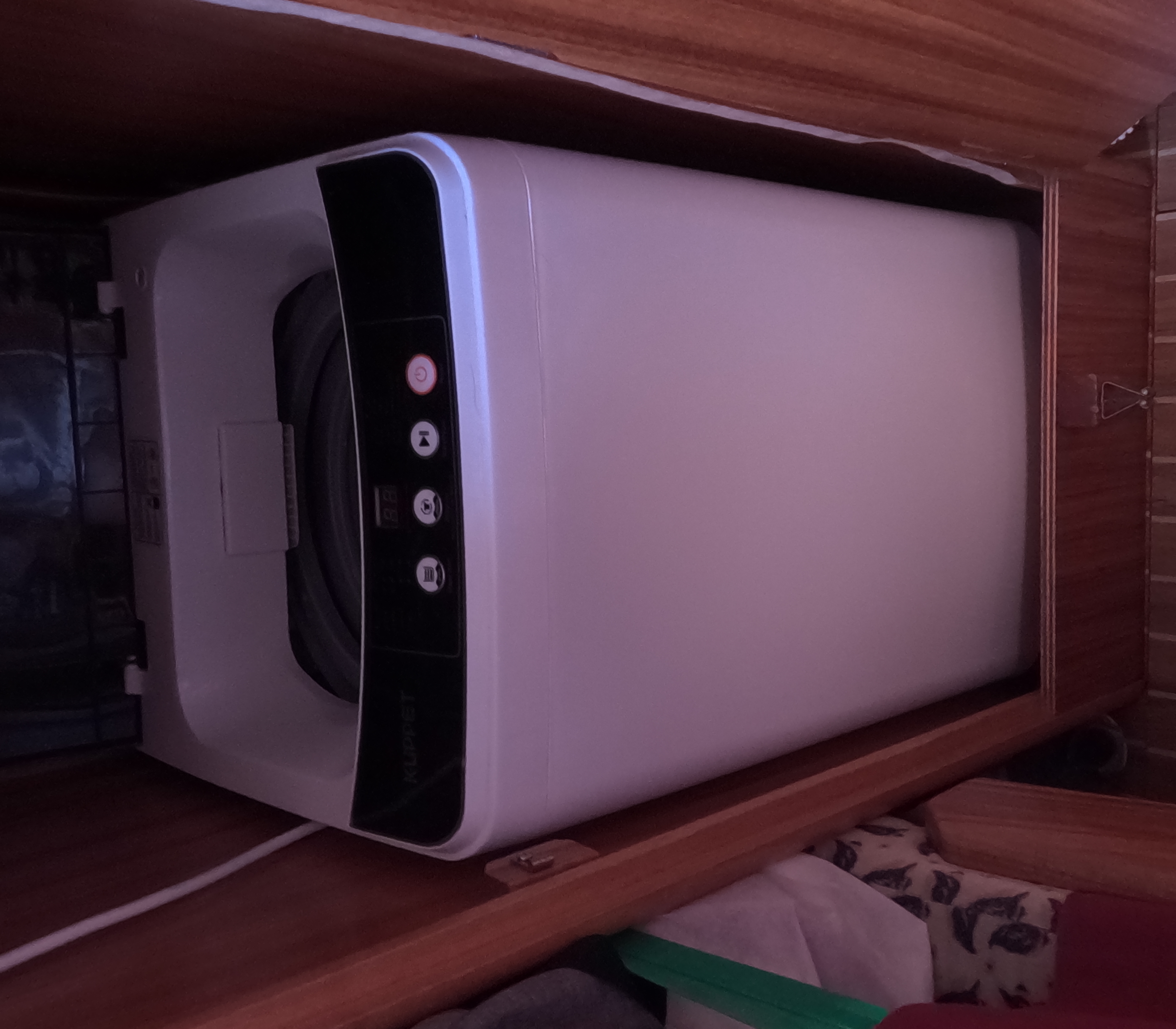
Storage
Mastering the art of stowing away unused items onboard will elevate you to expert status, akin to conquering the highest level of Tetris. It becomes a thrilling challenge to ensure that everything fits perfectly, requiring strategic manoeuvring and careful placement. While this ongoing event may initially frustrate Sander, as the pasta and tins seem to relocate themselves every other week, we are steadily making progress towards achieving optimal storage efficiency.
Every nook and cranny within the boat presents a valuable opportunity for additional storage, capable of accommodating an extra kilogram of pasta or a bottle of washing liquid. When embarking on a significant provisioning trip for a long crossing or when moving to an area where food is expensive, these hidden storage spaces become your most treasured allies. They provide the perfect solution to maximise your storage capacity and ensure that you are well-prepared for any adventure that lies ahead.
We have recognised the practicality and advantages of utilising a diverse range of ziplock bags and plastic containers in various dimensions to facilitate the effective storage of both perishable food items and household necessities.
Sewing
Prepare yourself for a multitude of sewing projects onboard your boat. From repairing tears in the bimini or sail, to completely revamping interior cushions and curtains, the need for sewing skills will arise frequently, especially when you discover that the fabric is deteriorating after 22 years of use.
While having a Sailrite sewing machine would have been ideal for handling larger canvas pieces, we have made do with a resourceful alternative. We stumbled upon an old Toyota Z500 sewing machine near a dumpster (we managed to find a manual for her too), and with a few adjustments and spare parts, it has become my trusted companion and a lifesaver for our sewing needs.
For the tougher outdoor canvas projects that are difficult to pierce with a regular sewing machine needle, I turn to the Speedy Stitch sewing yawl. While its actual speed may be debatable, it undoubtedly ensures strong and durable stitches.
To ensure you are well-prepared for your sewing endeavours, it is essential to bring along spare materials such as outdoor canvas and interior fabric. Opt for UV-resistant thread specifically designed for outdoor projects, and stock up on essential extras like hook and loop strips, snap fasteners, and a reliable hand stitching set. Additionally, I highly recommend the invaluable resource, “Canvas for Cruisers” by Julie Gifford, which is filled with practical ideas and valuable suggestions that have proven to be indispensable.
By equipping yourself with the necessary tools, materials, and knowledge, you will be ready to tackle any sewing project that comes your way no matter how remote.
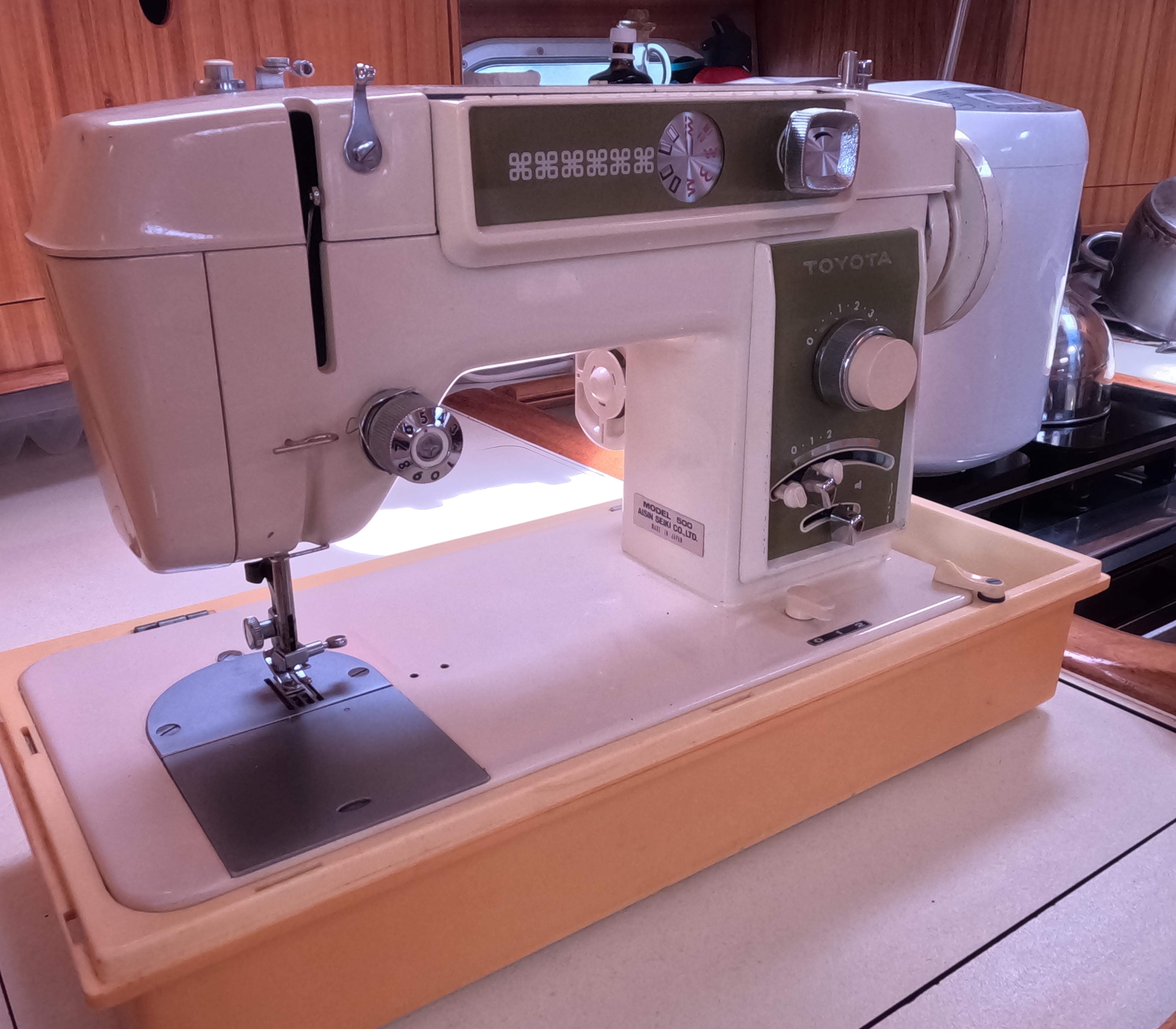
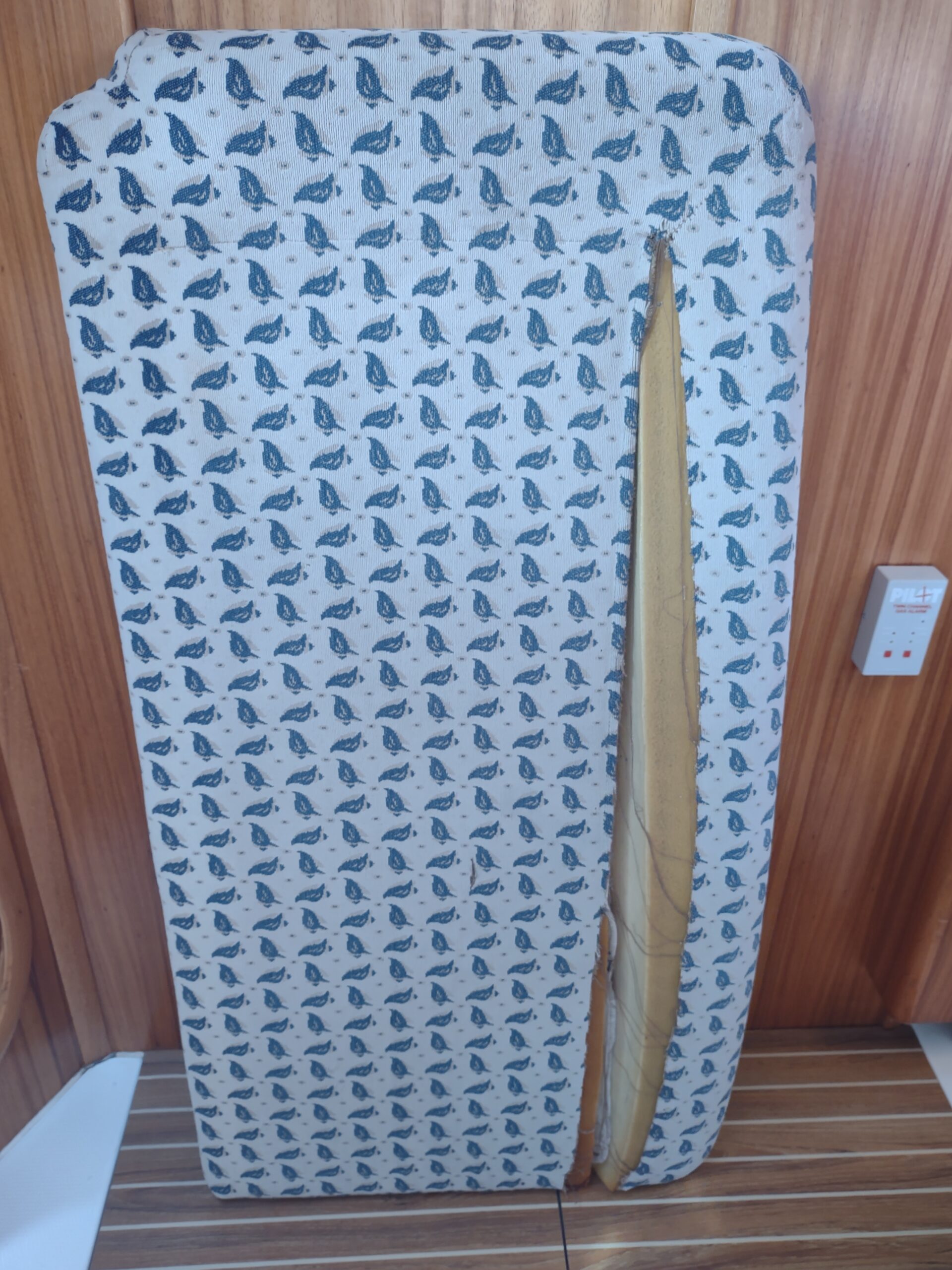
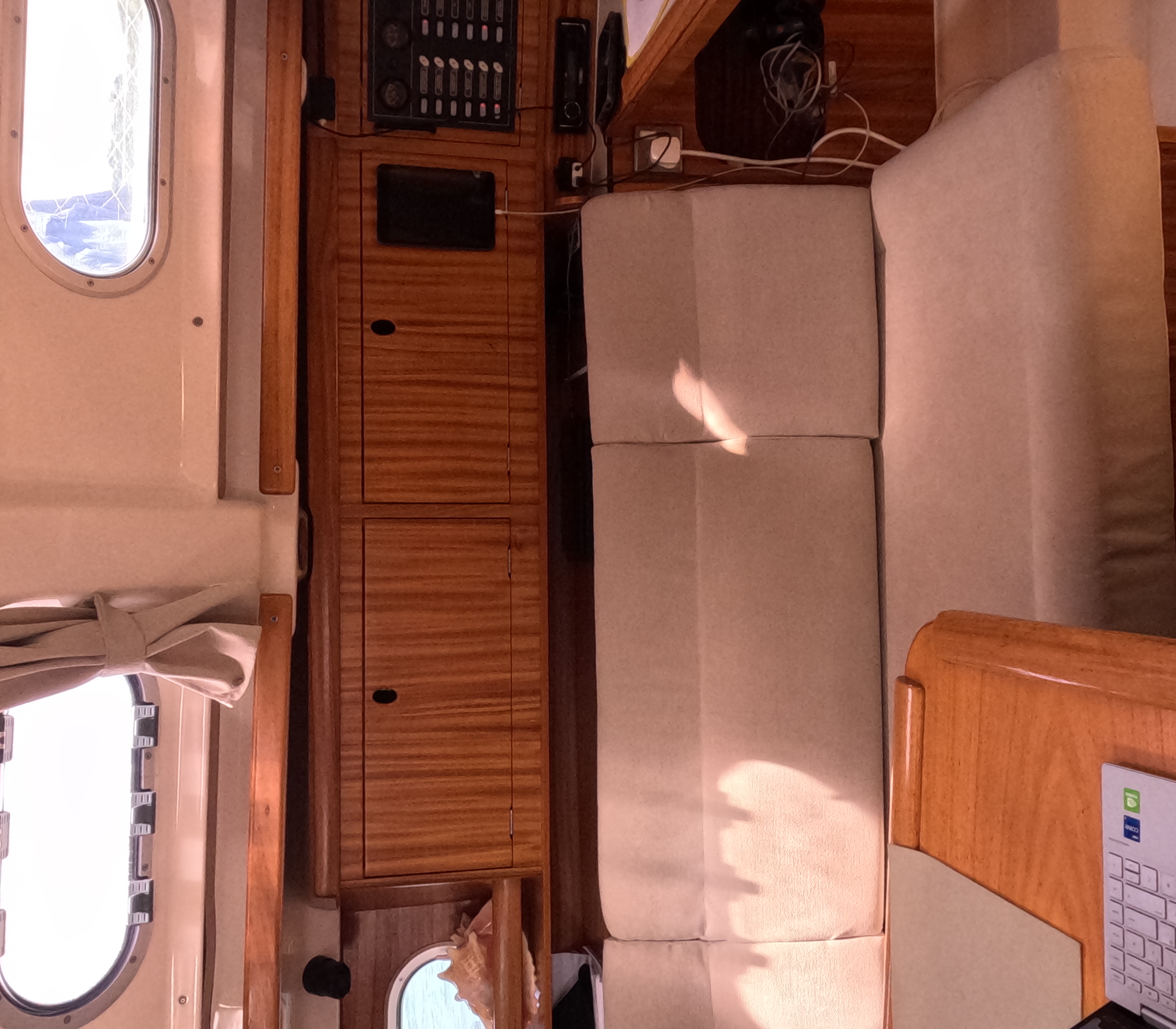
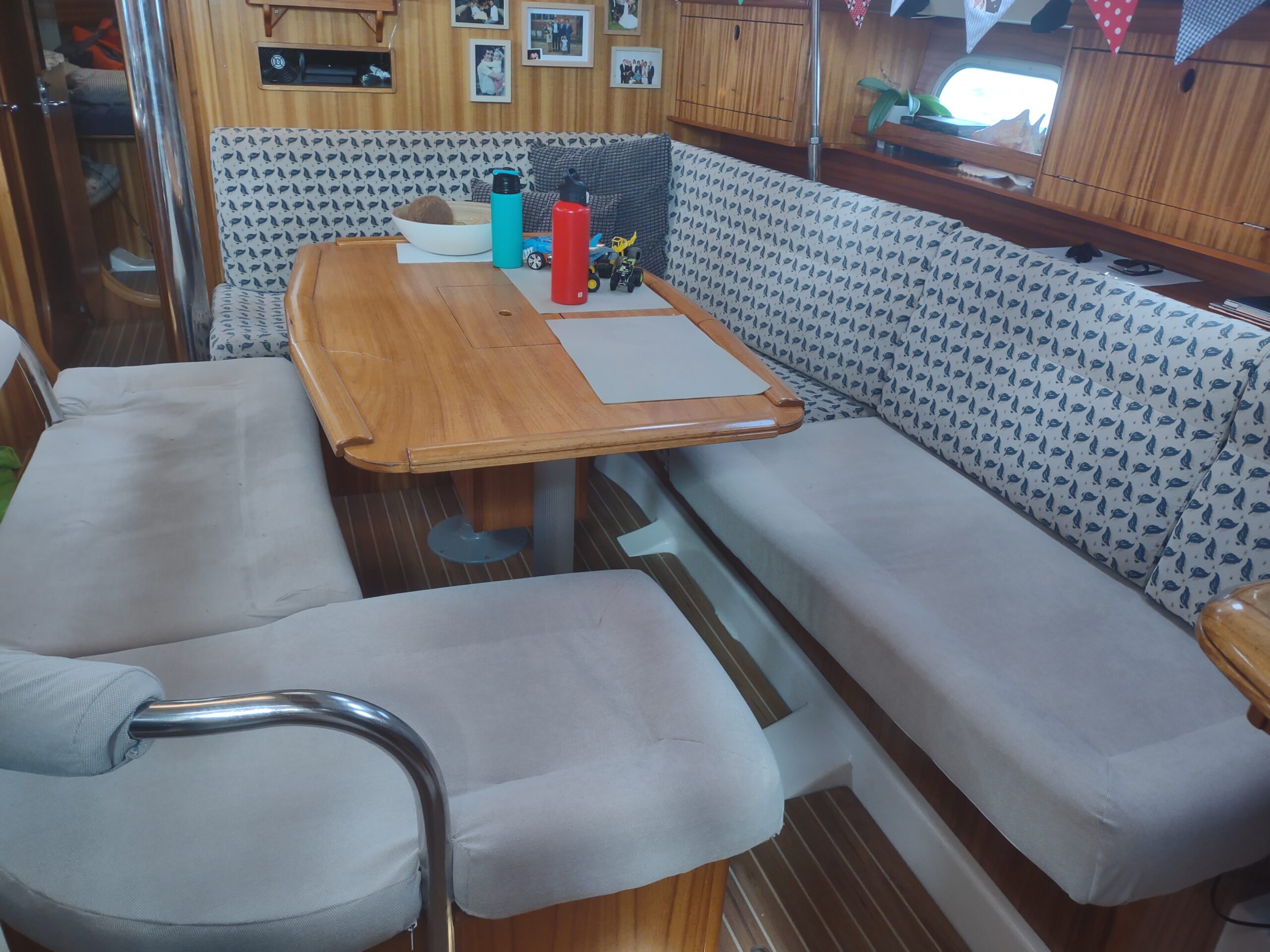
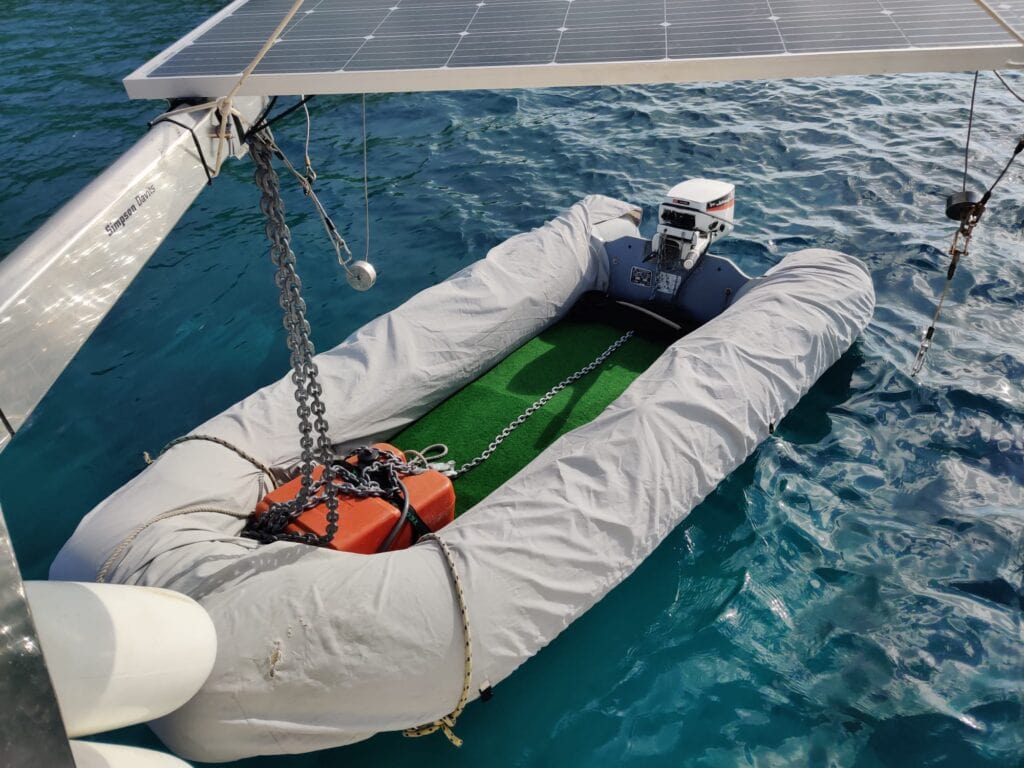
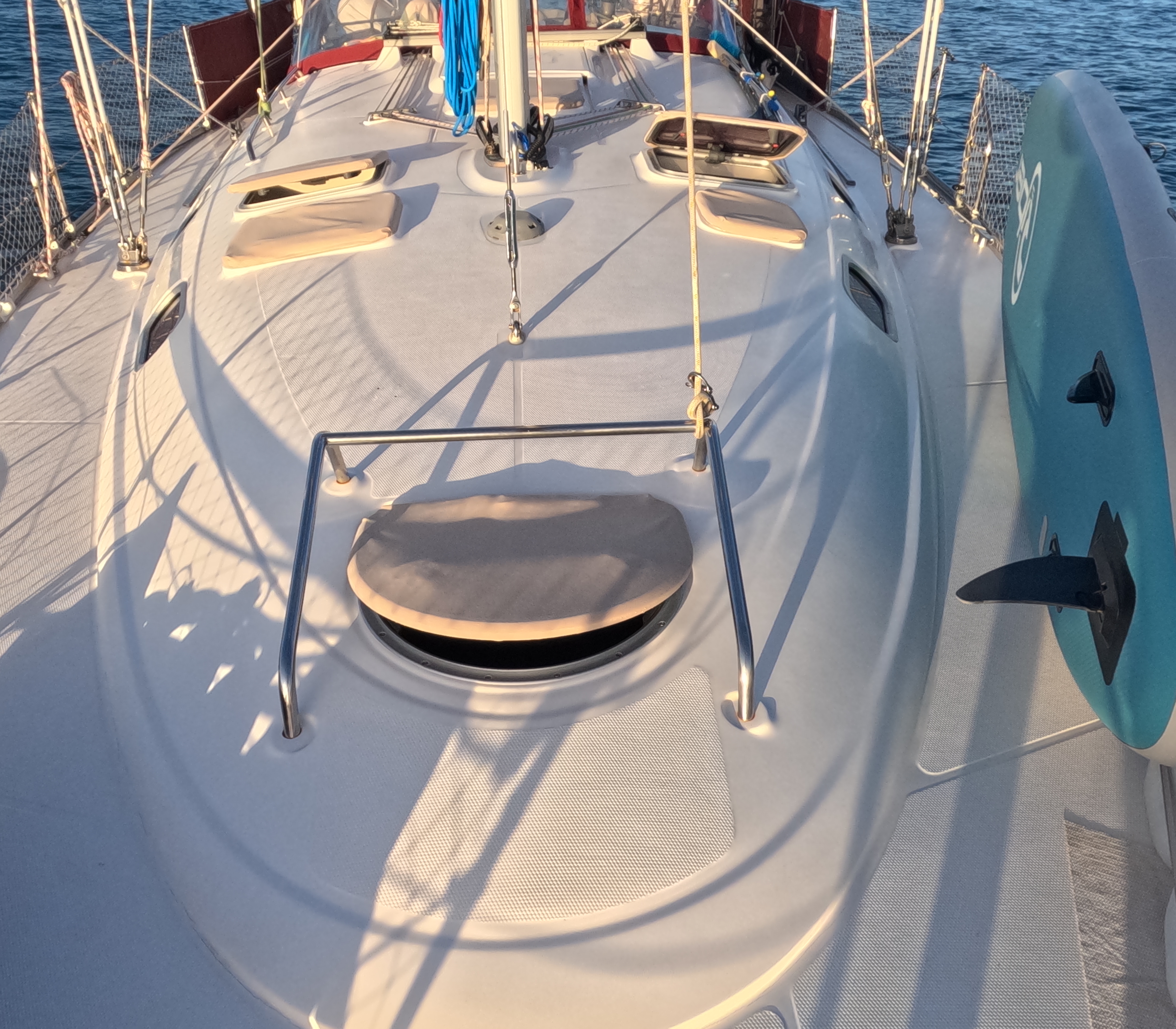
Boat Maintenance
As you venture further South on your sailing journey, it’s crucial to be aware of the increased risk of UV damage to any items stored on the deck. To protect our valuable possessions, we have made covers for the hatches, cannisters, and even the dinghy. The covers will shield your belongings and extend their lifespan, giving you peace of mind throughout your voyage.
Moreover, we have observed varying levels of growth on the hull, which can negatively impact your boat’s performance. While the choice of anti-foul is important, it’s equally crucial to consider the abundance of marine life in the water. To prevent any unwanted hitchhikers slowing you down, we highly recommend a weekly scrub to keep your boat’s hull clean and free from any trailing “beards.” In addition, a hard antifoul would allow for you to scrub to your hearts content, and stay away from white…our bigger mistake as the lack of scrubbing shows really fast.
To make our sailing experience even more enjoyable and worry-free, we have created a comprehensive maintenance list. This list includes not only regular cleaning tasks but also weekly, monthly, and annual servicing for various moving parts on our boat. By following this well-structured maintenance schedule, we can ensure that our boat remains in top condition, enhancing both our safety and overall sailing enjoyment.
Safety
It is essential to prioritise the acquisition of crucial safety equipment for your sea voyage. The following items are deemed invaluable:
- Extra line for securing the anchor during passages to prevent displacement from the frame and potential windlass damage.
- Utilise copper wire to secure all shackles, including the anchor shackle.
- Install preventers to avoid accidental jibes.
- Ensure the presence of a safety line running from the foredeck to the stern.
- Maintain an ample supply of torches and batteries as needed.
- Carry a handheld VHF radio while operating the dinghy.
- Equip yourself with a range of sail straps in various sizes for securing loose items.
- Utilise rust-free padlocks for the dinghy and cockpit lockers.
- Equip the dinghy with a chain and anchor.
- Have spare mooring lines readily available for unforeseen circumstances.
- Carry a heavy-duty sea anchor (drogue) with sufficient lines extending at least 100 meters behind the boat.
- Regularly practice man-overboard drills and establish an action plan.
- Print a Mayday sheet containing all necessary details for emergency calls, including callsign and relevant information.
- Keep one or more handheld compasses on board.
While there may be additional items to consider, this list provides a strong foundation for your safety preparations.
Fishing gear
When it comes to ocean fishing, be wary of shops that push an unnecessary assortment of expensive fishing rods. The truth is, you can embark on your fishing adventures with just a few essential items that will serve you exceptionally well:
1. Hand reel: Opt for a strong, simple and compact trolling reel that is effortless to set up and store, making it a practical choice for ocean fishing.
2. Vibrant squid in orange or pink: Through our own experiences, we have discovered that these eye-catching colors are particularly effective in attracting fish.
3. The Cruisers Handbook of Fishing by Scott Bannerot and Wendy Bannerot: Highly regarded among seasoned sailors, this invaluable resource offers a treasure trove of knowledge and handy tricks to enhance your fishing skills.
4. Sturdy net and Gaff hook: A sturdy net is an essential tool for safely lifting and securing larger catches, such as mackerel, from the water. But keep a gaff hook ready for when you hook a big one.
5. Pliers: These versatile tools will prove invaluable for safely removing hooks when necessary.
6. Rubbing alcohol: Employ this effective and humane method to swiftly dispatch caught fish. Simply apply a few drops to their gills, and within a mere 30 seconds, they will cease fighting.
7. Filleting knife: Keep a sharp filleting knife at the ready and consult the guidebook for expert tips on filleting various types of fish.
8. Chopping board: For the filleting in the cockpit or on the sugar scoop.
In the Caribbean, it is important to note that catching lobsters is discouraged during the months that do not include the letter “R.” This practice allows the population to grow and reproduce, ensuring sustainability. In addition, ciguatera is prevalent in the Caribbean, so verse yourself in the fish to avoid eating.
Furthermore, be prepared for the abundance of sargassum in the water, which can become entangled in your fishing lines. We have experienced firsthand how the weight of this grass has resulted in the loss of one of our favorite lures while crossing between Les Saintes and Guadeloupe.
Remember, as you gain experience on the water, your fishing gear and knowledge will naturally evolve. Start with these essential items, and allow your fishing journey to unfold organically. By focusing on mastering the fundamentals and gradually expanding your repertoire, you will undoubtedly become a skilled angler in no time.
Night Snorkeling
One of the most unexpected yet thrilling activities we discovered was suggested some of our adventurous friends: a night snorkel to hunt for lobster. Initially, this was not something we would have considered, but now it has become an activity that both Sander and I thoroughly enjoy and highly recommend.
To embark on this exciting adventure, simply take your dinghy out to the rocky areas, drop your dinghy anchor, and dive in to start your hunt. Equipped with a full wetsuit, a proper underwater flashlight, gloves, and a catch bag, you are all set for an unforgettable night of exploration.
The underwater world undergoes a mesmerising transformation in the evening, revealing another dimension of sea life that is truly captivating. It is important to note that there are predators lurking in the darkness, so it is advisable to always have a buddy by your side for safety.
Water Toys
We were completely unaware of the incredible experiences we were missing out on until we encountered a remarkable sailing family. This family is in a league of their own, engaging in thrilling activities like skydiving, para-gliding, foiling, wakeboarding, skiing, and so much more. Their expertise and onboard equipment left us in awe. Spending just a few days with them opened our eyes to a whole new world of excitement and adventure.
Suddenly, our cruising experience took on a whole new dimension. Inspired by this family, Sander and Ava now embark on thrilling tow sessions behind the dinghy on a paddleboard. The sheer joy and exhilaration they experience during these rides are unparalleled. It became clear to us that acquiring a foiling board is an absolute necessity for our future adventures.
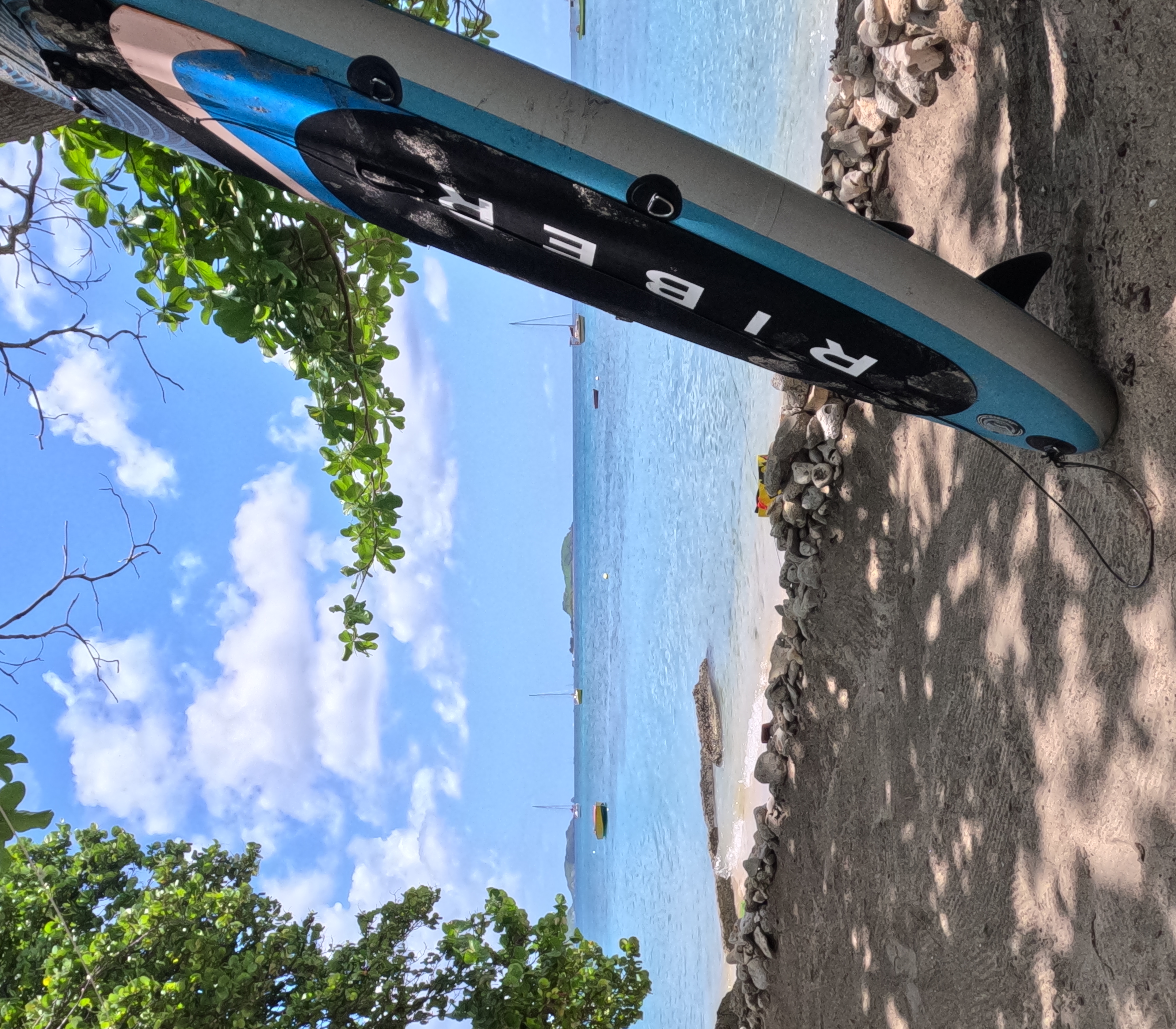
Food
Embarking on our sailing adventures, most of the islands we encountered were uncharted territory for us. With limited knowledge of what to expect from a provisioning perspective, we eagerly sought advice from fellow sailors. Now, we pass on our insights to help other sailors navigate the world of provisioning with confidence.
United Kingdom – Prioritise stocking up on UK specialty items that will sustain you until you reach Gibraltar, as these may be harder to come by elsewhere.
Spain – Food stores in Spain are plentiful, offering excellent prices. Indulge in an abundance of crustaceans, as their availability and affordability diminish the further you travel.
Portugal – Similar to Spain, Portugal also offers a wide range of food options at reasonable prices.
Gibraltar – Once you’ve depleted your stash of chutney and cider, head over to Morrisons. Yes, there is a Morrisons in Gibraltar, where you can find all the familiar UK products you remember. Don’t miss the opportunity to stock up on Bumbu Rum, a surprisingly affordable and exceptionally enjoyable sipping rum. While a major provisioning trip may not be necessary, ensure you have enough food to last you until you reach the Canary Islands.
Canary Islands – Here, you’ll find everything you need at great prices, including affordable meat. If you’re crossing from the Canary Islands, consider stocking up on instant pasta sauces, ramen noodles, red meat, beer, chocolate and as much boxed wine as you can find. Remove the boxes, and you’ll have wine bladders that can be stowed easily in your bilges. Be cautious with canned drinks, including beers, as we discovered that the thin metal used in some cans led to our bilges soaked with beer by the time we reached Antigua.
Caribbean – Provisioning in the Caribbean can be hit or miss, but staples like pasta, rice, and chicken are generally available everywhere. However, finding a quality steak or roasting joint may prove challenging. Consider the French islands as your go-to for provisioning, as they offer a wide selection of European food at reasonable prices. Be aware that prices skyrocket once you venture into other windward islands. To adapt to the local produce and avoid exorbitant costs, we have adjusted our cooking to feature chicken, rice, potatoes, plantains, callaloo, breadfruit, and an abundance of mango. While prices are generally reasonable, expect to pay a premium for beef, wine, or out-of-season vegetables.
To ensure we never find ourselves in dire need, we maintain a backup supply of tinned tomatoes, peppers, corn, mushrooms, mixed beans, and tuna. Additionally, we keep a month’s worth of pasta, rice, and legumes, while the freezer is stocked with as much meat as we can fit. Whenever possible, we replenish our bilges with local rums (which are incredibly affordable). We prioritise using fresh produce within the week, transitioning to preserved options like canned corn, containerised mushrooms, tomatoes, and pasta as needed.
In addition, we have started making our own kimchi and pickling vegetables. This has added a new dimension to the flavours we have available to cook with. We make our own bread and have recently started making our own naans and pita to add to our menu. Do take heed that most flours purchased on the islands will have some form of a weevil, so store in a plastic ziplock bag to ensure they do not spread to the rest of your food storage.
To resist temptation and maintain discipline, we follow a menu plan and adhere to a shopping list that outlines our needs. This approach makes it easier to resist unnecessary purchases and ensures we remain well-prepared throughout our sailing journey.
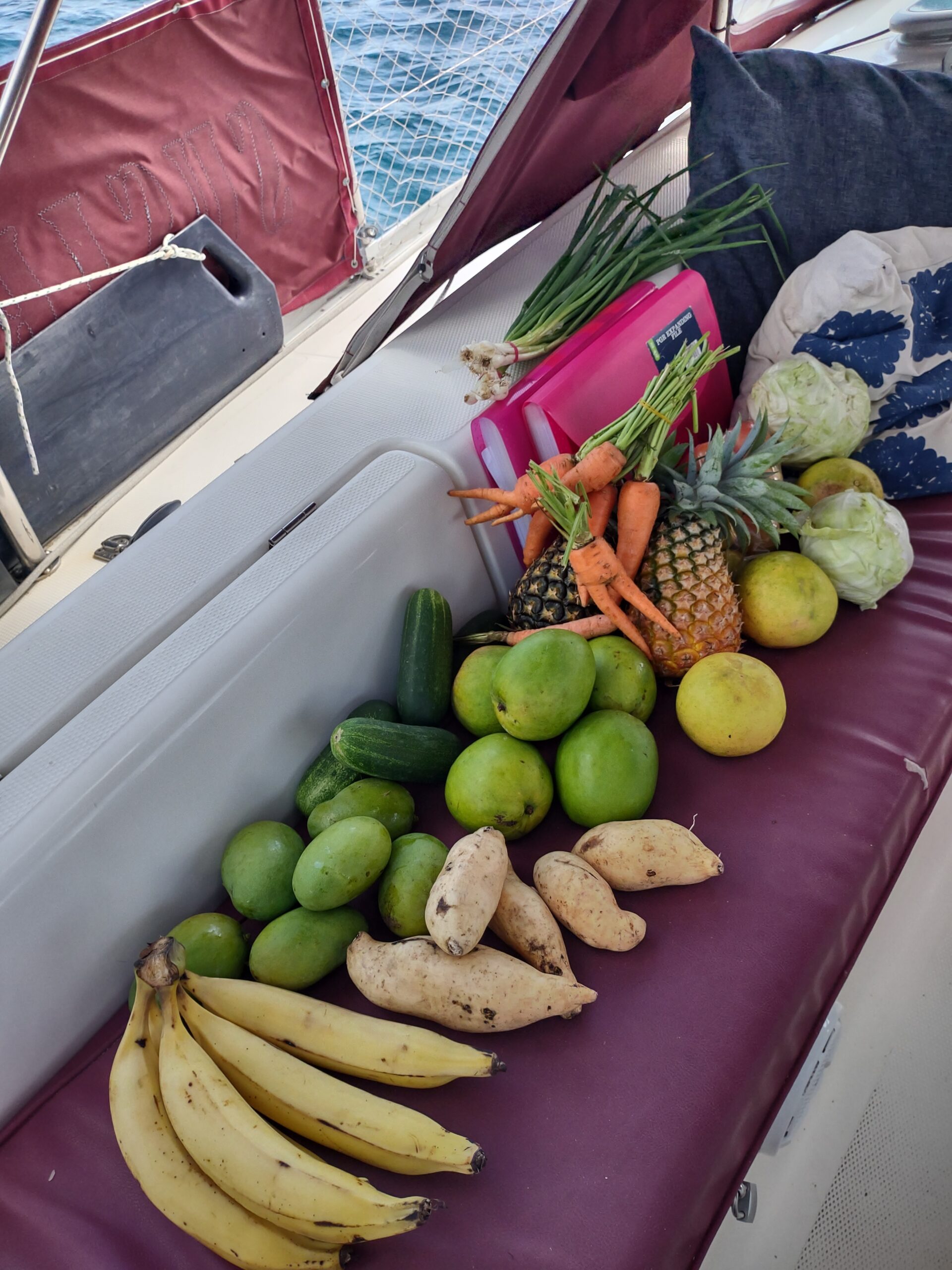
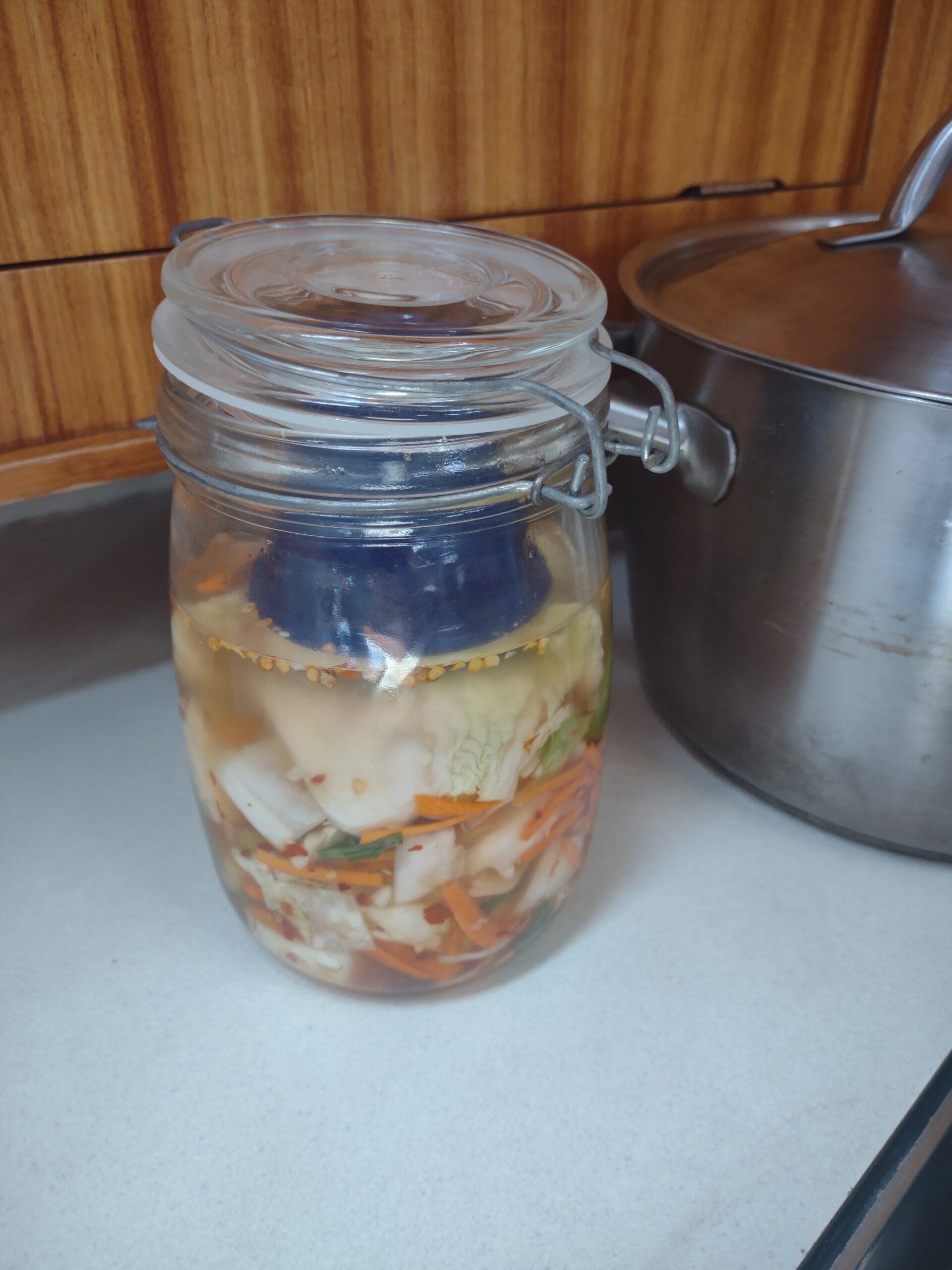
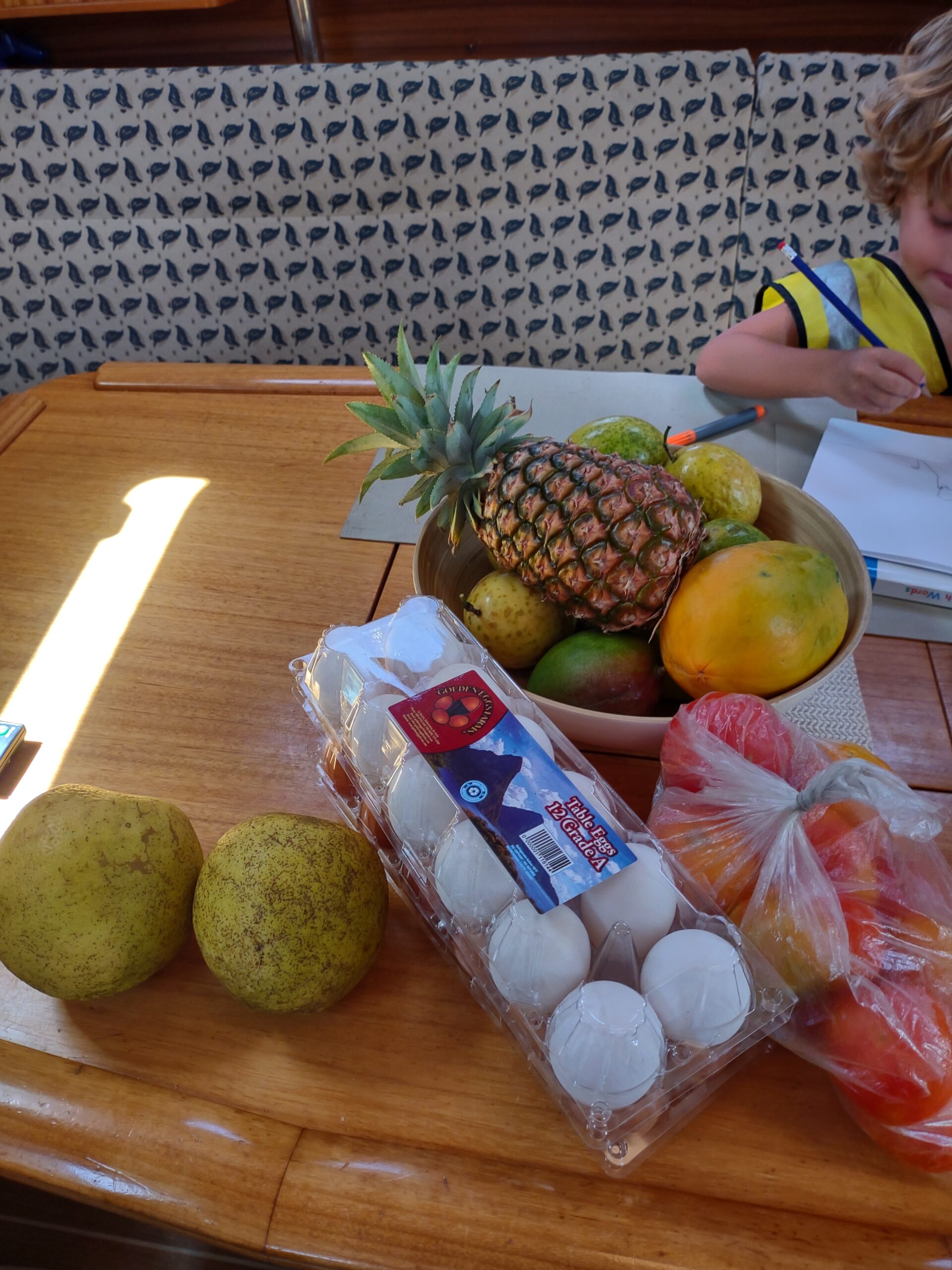
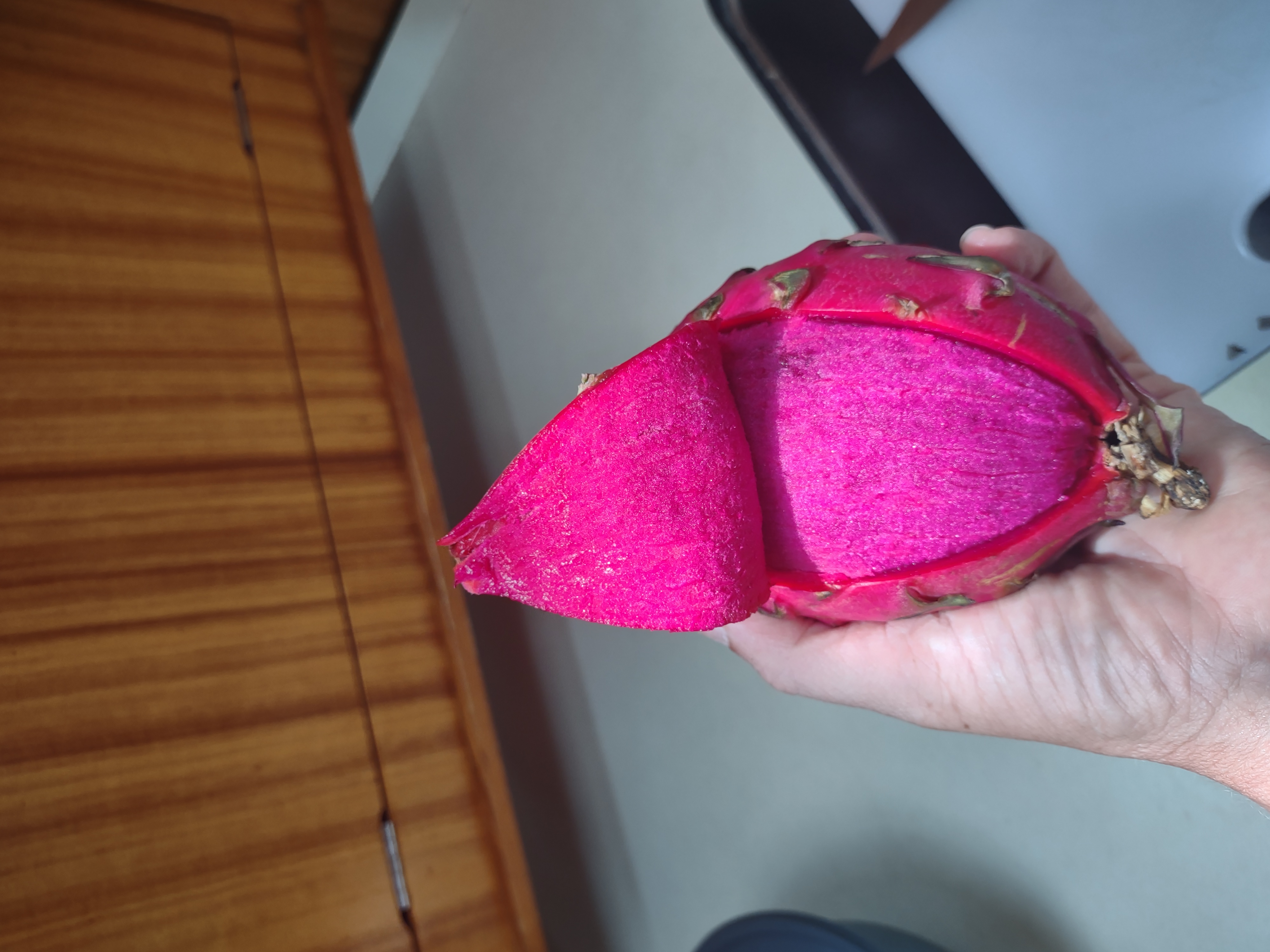
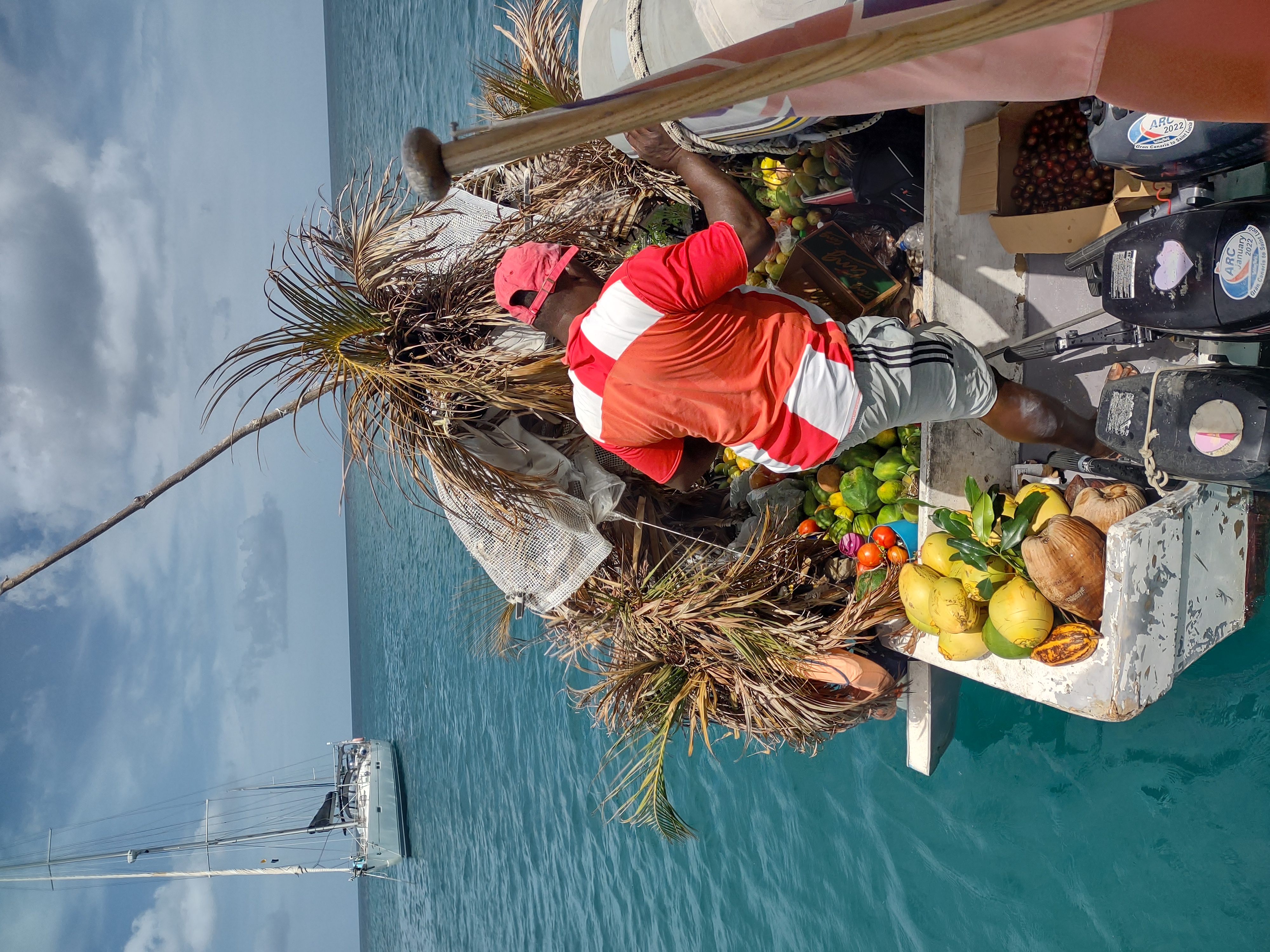
General Sailing
Every ocean or crossing presents its own unique challenges. Time and time again, we found ourselves expecting winds of 15 knots, only to be faced with winds that were either 10 knots less or more. The same unpredictability applied to the predicted swell, often requiring us to add an additional 1 meter to the forecasted measurement. To navigate these uncertainties, we relied on various weather models such as, but not limited to ECMWF, GFS, and ICON to determine the optimal time for crossing.
When crossing Biscay, we prioritised finding a 5-day weather window to ensure a safe passage. Unfortunately, we encountered minimal wind during this crossing and had to rely heavily on motor power. To avoid any potential challenges, I strongly recommend carrying ample fuel to ensure a smooth journey.
The Spain to Gibraltar route demanded careful selection of weather windows, particularly when passing Finisterre due to the challenging combination of headlands and a shallowing sea floor. The wind in this area could suddenly escalate from 5 to 25 knots within seconds, adding an additional element of caution.
While passing Portugal, it is crucial to be vigilant of the fog that can persist throughout the day. Additionally, be aware that many fishing vessels in this area do not utilise AIS transponders. The coastline is scattered with fishing pods located more than 20 nautical miles off the coast, necessitating a keen eye during watch duties.
After successfully navigating Sagres, the sailing becomes notably easier as you are sheltered by the land. However, it is important to remain vigilant for the presence of Orca whales when heading towards Gibraltar. These magnificent creatures were our primary concern during these passages, and any notable movement or sound of a blow hole would immediately put us on alert. While we carried pingers as a precautionary measure, we never had to utilise them. Recently, we have learned that having firecrackers on board may be the most effective method to deter Orca encounters when other tactics such as reversing, speeding up, or sitting becalmed prove ineffective. We used Orca Ibirica’s website to see where the latest attacks took place and waited for green lights to make our way South.
Some sailors have chosen to avoid these challenges altogether by opting for alternative routes. For example, sailing from Vigo in Spain or from the Portuguese coast to Madeira and then onwards to the Canary Islands. By taking this route, you avoid the attacking Orca territory down south.
Sailing from Gibraltar to the Canary Islands offers little excitement, except being vigilant to watch for fishing nets off the coast of Morocco. Some might be lit in the evenings, but in our case we ran into one that was not lit. Interestingly, fellow sailors have shared similar experiences, even when sailing close to the shipping channel where the fishermen are not meant to lay their nets.
Upon reaching the Canary Islands, you’ll encounter acceleration zones that can make certain passages more thrilling than others. These zones experience winds ranging from 20 knots and higher, so it’s important to exercise caution and familiarise yourself with them.
The Atlantic crossing is unpredictable, with the journey sometimes being favorable and other times challenging. Weather planning becomes hit or miss once you’re in the middle of the ocean, leaving you at the mercy of luck. Furthermore, there are no safe havens when adverse weather strikes.
Sailing in the Caribbean islands often requires navigating against the prevailing wind. The swell from the Atlantic can be particularly rough. However, the distances between the islands are relatively short, with travel times usually lasting only a couple of hours. It’s worth noting that you should be cautious of large patches of sargassum, as they can cause your propeller to become entangled.
For navigation we have installed both Navionics and CMAP on two tablest that are waterproof and on our mobile phones. We use Navily to read up on potential anchorages and Windy for general weather updates. In the Caribbean it would be worth joining the Telegram group ‘Caribbean Online Weather‘ for up to date information on tropical waves passing through. We have recently joined Facebook to get up to date information, cruiser tips and support from the various cruising communities.
Entering and exiting various Ports
Customs and Immigration procedures can vary significantly from one island to another. While some islands offer the convenience of online clear-in options like SailClear, it’s important to note that the French Islands do not provide this service. To ensure a smooth process, it is vital to have the necessary documents readily available. These include all passports for the crew onboard, an up-to-date insurance schedule, registration papers, and check-out papers from the previous port.
To provide peace of mind, we strongly recommend having both physical copies and online versions of these documents. This way, you can easily access them whenever needed, regardless of your location.
It’s not uncommon for sailors to express frustration over the formalities and time-consuming nature of checking in and out of certain islands. However, our experience has shown that dressing appropriately (avoiding tank tops and ripped pants) and maintaining a calm and polite demeanor can make a significant difference in how you are treated. Sander, the captain and thus responsible for check-ins, has frequently emphasised the importance of avoiding arrogance, as it can greatly impact the interactions with customs and immigration officials. Treating these officials with respect and courtesy will likely result in a more positive experience for everyone involved.
To gather essential information about each island’s requirements and opening times, we have extensively utilised resources such as Noonsite, Navily, and general online searches. It’s important to remember that in the Caribbean, the concept of “Caribbean time” may come into play. This means that you might encounter situations where an officer is temporarily unavailable due to attending church or taking their children to school. Being aware of these cultural nuances will help you navigate the process more effectively.
Social Aspects
When it comes to socialising in the sailing community, we’ve noticed some interesting dynamics. In certain areas before the Canary Islands and Caribbean, we were surprised by the lack of enthusiasm among sailors. Sometimes, not even a wave when anchored next to each other! But fear not, in friendlier areas, you’ll make friends in no time.
Now, let’s talk about sailor etiquette. Remember, not every sailor is rolling in dough, so it’s always a good idea to bring your own drinks when attending a social gathering on another boat. And please, refrain from boasting about the number of passages you’ve done or flaunting your wealth. Trust us, no one will take you seriously, and you might find yourself standing alone for the rest of the evening.
Oh, and be mindful of how you treat your fellow sailors. Cutting ahead of them when entering a marina or criticising their boat won’t earn you any popularity points. Remember, you’re likely to run into them again, so it’s best to keep things friendly and respectful. Happy sailing and smooth socialising!
In conclusion, I hope that the tips and guidance shared in this blog post have shed light on various aspects of sailing, from provisioning to maintenance and general guidance. By following these suggestions, you can navigate the waters with confidence and enjoy a smooth sailing experience. Should you have any further questions or need additional assistance, please don’t hesitate to reach out. In conclusion, sailing, like many endeavours, requires learning through experience to become a master. Wishing you fair winds and following seas on your future sailing adventures!
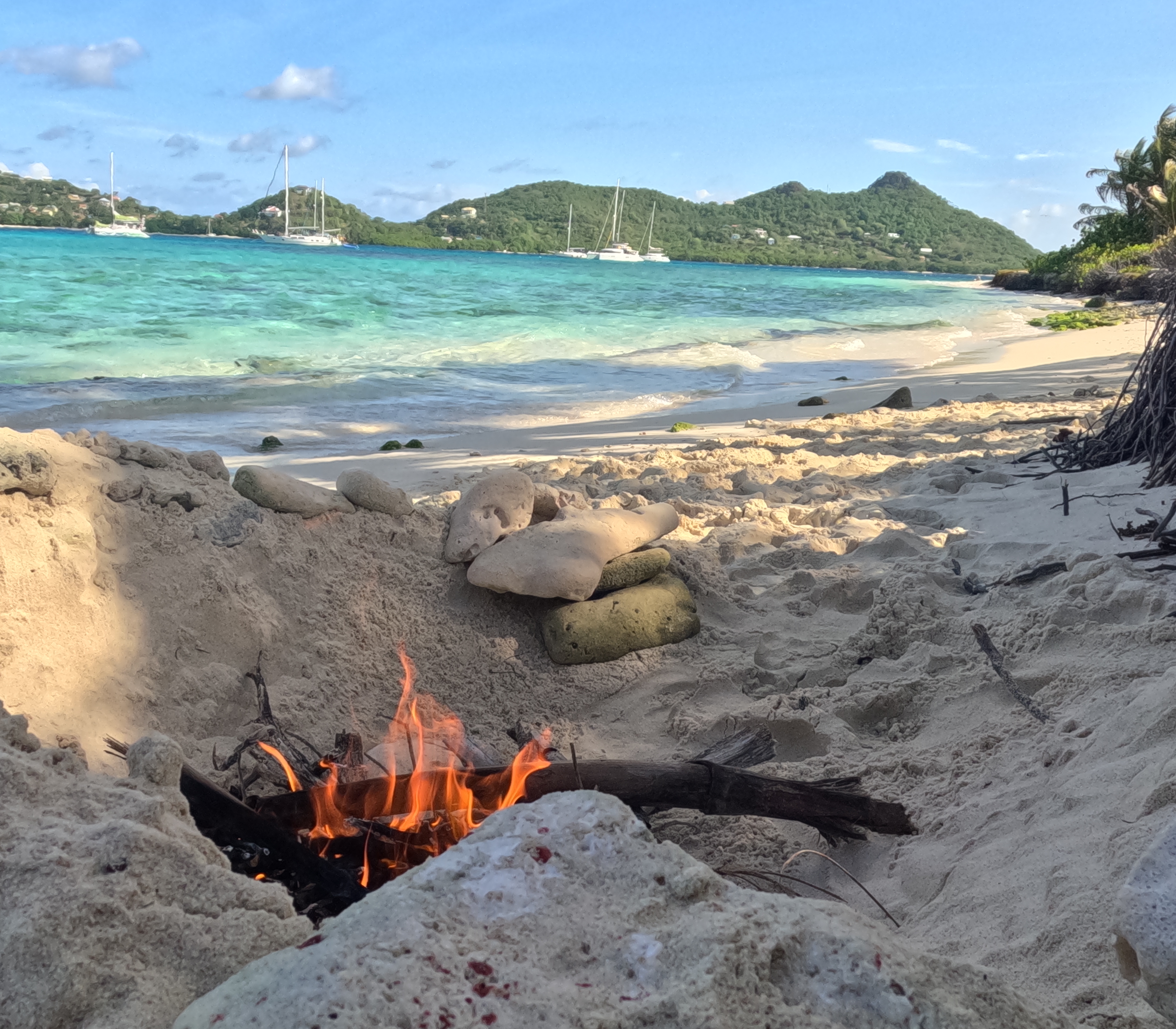
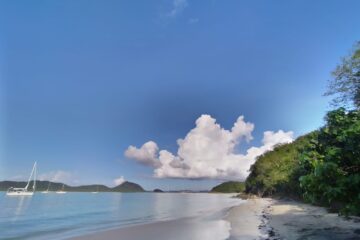
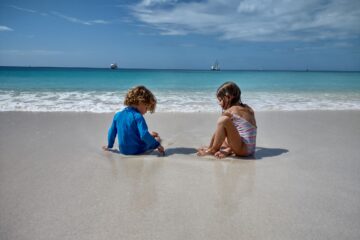

4 Comments
Fred Bugden · July 29, 2023 at 1:39 am
Nicely written !
Danielle De Hoogh · September 18, 2023 at 7:52 pm
Thank you Fred! Look forward to seeing you in the water again soon!
Eric & Els · July 17, 2023 at 3:38 pm
Great learnings Danielle. You figured it out in only one year. Well done. And hope to see you sooner then later xoxox
Eric &Els
Danielle De Hoogh · September 18, 2023 at 7:52 pm
Thank you Eric and Els. In no time you will be in the Caribbean too 😉 Proud of you!